Frank F. Weber's Blog, page 9
October 14, 2020
American Indian Boarding Schools
The tragedy of American Indian boarding schools
Beginning in the 1800s and continuing into the 1950s, the federal government forced Native American children from their homes and sent them to faraway military-style residential schools. This policy has had profound effects on our Native American population. The boarding schools attempted to restructure Indians’ minds and personalities by severing children’s physical, cultural, and spiritual connections to their tribes. A sad quote taken from one of the boarding school workers:
A sad quote taken from one of the boarding school workers:
“The parents had a great love for their children and the little ones were very fond of their parents. It was heart-breaking for the children to leave their homes even though it might be a poor hut. Many tears are shed on the first days of school because of homesickness.”
The boarding schools in Minnesota began in the late 1800’s. They were called “industrial schools.” They prepared boys for manual labor and farming, and girls for domestic work. The boarding schools severed the children’s physical, cultural, and spiritual connections to their tribes.
Much of the information below was taken from the article The Sad Legacy of American Indian boarding Schools in Minnesota and the U.S., written by Dr. Denise K. Lajimodi. On March 3, 1891, Congress authorized the Commissioner of Indian Affairs to create rules that required Indian children to attend boarding schools. It also authorized the Indian Office to withhold rations and clothing from Indian parents who would not send their children to the boarding schools. Indian Agents forcibly abducted children as young as 4 from their homes and enrolled them in the boarding schools.
On March 3, 1891, Congress authorized the Commissioner of Indian Affairs to create rules that required Indian children to attend boarding schools. It also authorized the Indian Office to withhold rations and clothing from Indian parents who would not send their children to the boarding schools. Indian Agents forcibly abducted children as young as 4 from their homes and enrolled them in the boarding schools.
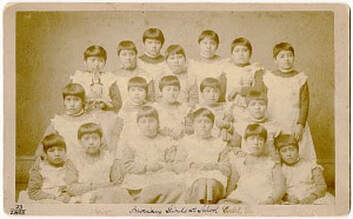
 The standard boarding school curriculum offered half days in the classroom and half days spent at some form of manual labor soon became. The schools exploited the free labor of Indian children in order to function.
The standard boarding school curriculum offered half days in the classroom and half days spent at some form of manual labor soon became. The schools exploited the free labor of Indian children in order to function.
Minnesota had 16 boarding schools that drew students from all of the state’s reservations. The earliest was White Earth Indian School, which began in 1871. In 1902, St. Mary’s Mission boarded an average of 62 students, Red Lake School 77, Cross Lake 42, White Earth 110, and Clontarf 130 children. More than 2000 children attended the Morris school during its history. By 1910, Vermilion Lake held 120 students. Cass/Leech Lake opened with a capacity of 50 students.
The daily schedule:
5:45 am wake-up call with a bugler or bells.
6:30 Mass
7:30 work detail
8:30 classes
10:15 recess
12:00 lunch
1:15 classes
2:15 recess for lower grades
3:30 recreation
4:30 needlework and chores
6:00 supper and recreation
7:30 bed for younger children and study for older children
8:30 bed for older children.
9:00 p.m. Pupils retired to the sound of taps
Methods of discipline at Minnesota boarding schools were harsh. Some schools had cells or dungeons where students were confined for days and given only bread and water. A common punishment for students speaking their native language was to be forced to chew lye soap. The boarding schools recorded epidemics of measles, influenza, blood poisoning, diphtheria, typhoid, scarlet fever, and tuberculosis, which swept through overcrowded dormitories. Students also died from accidents such as drowning and falls.
Boarding school staff assigned students to “details:” working in the kitchen, barns, and gardens; washing dishes, tables, and floors; ironing; sewing; darning; and carpentry. The schools utilized an “outing” program that retained students for the summer and involuntarily leased students out to white homes as menial laborers.
 Before and after pictures were used to show the improvements the school delivered. Maybe it’s just me, but they look better in the before pictures.
Before and after pictures were used to show the improvements the school delivered. Maybe it’s just me, but they look better in the before pictures.
In 1928, the U.S. government released the Meriam Report, an evaluation of conditions on American Indian reservations and in boarding schools. The critical study called the schools grossly inadequate. It presented evidence of malnourishment, overcrowding, insufficient medical services, a reliance on student labor, and low standards for teachers. The original boarding schools began closing as parents increasingly kept their children at home. By the end of the 1970s, most had shut down. In 2016, though tribes and the Bureau of Indian Education (BIE) continue to run 50 schools nationwide, no Indian boarding schools remain open in Minnesota.
 The boarding school policies led to the deaths of thousands of students through disease, hunger, and malnutrition. Each boarding home had its own graveyard. The attack on the Native culture was ridiculous, the damage to Native families is long-lasting.
The boarding school policies led to the deaths of thousands of students through disease, hunger, and malnutrition. Each boarding home had its own graveyard. The attack on the Native culture was ridiculous, the damage to Native families is long-lasting.
Most people don’t realize that many holocaust survivors were abusive parents. Imagine a generation of children who lost the concept of family. It’s a tragedy that still needs a solution. I’m open to suggestions. We’re all on this planet together. We need to help each other out. With that said, never lose site of the fact that there are amazing Native Americans in every profession. I know as I work as a colleague to amazing Native American therapists.
Thanks for listening,
Frank Elise Yates, cover model for Lying CloseThank you for the amazing start to the release of Lying Close. With social distancing, we managed to pull off sold out book openings in Brainerd and St. Cloud. I need people to keep talking about the books, as all I have right now is word of mouth. Fortunately, the audio books of
Murder Book
and
The I-94 Murders
turned out great and are available on Amazon. My paperbacks are available on
my website
or local bookstores.
Elise Yates, cover model for Lying CloseThank you for the amazing start to the release of Lying Close. With social distancing, we managed to pull off sold out book openings in Brainerd and St. Cloud. I need people to keep talking about the books, as all I have right now is word of mouth. Fortunately, the audio books of
Murder Book
and
The I-94 Murders
turned out great and are available on Amazon. My paperbacks are available on
my website
or local bookstores.
 The two-day conference will include presentations by:
The two-day conference will include presentations by:
Frank Weber , award-winning Minnesota author
Angela Wiechmann , immersion editor
Carissa Andrews , international bestselling indie author
Doug Dorow , thriller author
Beginning in the 1800s and continuing into the 1950s, the federal government forced Native American children from their homes and sent them to faraway military-style residential schools. This policy has had profound effects on our Native American population. The boarding schools attempted to restructure Indians’ minds and personalities by severing children’s physical, cultural, and spiritual connections to their tribes.
 A sad quote taken from one of the boarding school workers:
A sad quote taken from one of the boarding school workers:“The parents had a great love for their children and the little ones were very fond of their parents. It was heart-breaking for the children to leave their homes even though it might be a poor hut. Many tears are shed on the first days of school because of homesickness.”
The boarding schools in Minnesota began in the late 1800’s. They were called “industrial schools.” They prepared boys for manual labor and farming, and girls for domestic work. The boarding schools severed the children’s physical, cultural, and spiritual connections to their tribes.
Much of the information below was taken from the article The Sad Legacy of American Indian boarding Schools in Minnesota and the U.S., written by Dr. Denise K. Lajimodi.
 On March 3, 1891, Congress authorized the Commissioner of Indian Affairs to create rules that required Indian children to attend boarding schools. It also authorized the Indian Office to withhold rations and clothing from Indian parents who would not send their children to the boarding schools. Indian Agents forcibly abducted children as young as 4 from their homes and enrolled them in the boarding schools.
On March 3, 1891, Congress authorized the Commissioner of Indian Affairs to create rules that required Indian children to attend boarding schools. It also authorized the Indian Office to withhold rations and clothing from Indian parents who would not send their children to the boarding schools. Indian Agents forcibly abducted children as young as 4 from their homes and enrolled them in the boarding schools.
 The standard boarding school curriculum offered half days in the classroom and half days spent at some form of manual labor soon became. The schools exploited the free labor of Indian children in order to function.
The standard boarding school curriculum offered half days in the classroom and half days spent at some form of manual labor soon became. The schools exploited the free labor of Indian children in order to function.Minnesota had 16 boarding schools that drew students from all of the state’s reservations. The earliest was White Earth Indian School, which began in 1871. In 1902, St. Mary’s Mission boarded an average of 62 students, Red Lake School 77, Cross Lake 42, White Earth 110, and Clontarf 130 children. More than 2000 children attended the Morris school during its history. By 1910, Vermilion Lake held 120 students. Cass/Leech Lake opened with a capacity of 50 students.
The daily schedule:
5:45 am wake-up call with a bugler or bells.
6:30 Mass
7:30 work detail
8:30 classes
10:15 recess
12:00 lunch
1:15 classes
2:15 recess for lower grades
3:30 recreation
4:30 needlework and chores
6:00 supper and recreation
7:30 bed for younger children and study for older children
8:30 bed for older children.
9:00 p.m. Pupils retired to the sound of taps
Methods of discipline at Minnesota boarding schools were harsh. Some schools had cells or dungeons where students were confined for days and given only bread and water. A common punishment for students speaking their native language was to be forced to chew lye soap. The boarding schools recorded epidemics of measles, influenza, blood poisoning, diphtheria, typhoid, scarlet fever, and tuberculosis, which swept through overcrowded dormitories. Students also died from accidents such as drowning and falls.
Boarding school staff assigned students to “details:” working in the kitchen, barns, and gardens; washing dishes, tables, and floors; ironing; sewing; darning; and carpentry. The schools utilized an “outing” program that retained students for the summer and involuntarily leased students out to white homes as menial laborers.

 Before and after pictures were used to show the improvements the school delivered. Maybe it’s just me, but they look better in the before pictures.
Before and after pictures were used to show the improvements the school delivered. Maybe it’s just me, but they look better in the before pictures.In 1928, the U.S. government released the Meriam Report, an evaluation of conditions on American Indian reservations and in boarding schools. The critical study called the schools grossly inadequate. It presented evidence of malnourishment, overcrowding, insufficient medical services, a reliance on student labor, and low standards for teachers. The original boarding schools began closing as parents increasingly kept their children at home. By the end of the 1970s, most had shut down. In 2016, though tribes and the Bureau of Indian Education (BIE) continue to run 50 schools nationwide, no Indian boarding schools remain open in Minnesota.

 The boarding school policies led to the deaths of thousands of students through disease, hunger, and malnutrition. Each boarding home had its own graveyard. The attack on the Native culture was ridiculous, the damage to Native families is long-lasting.
The boarding school policies led to the deaths of thousands of students through disease, hunger, and malnutrition. Each boarding home had its own graveyard. The attack on the Native culture was ridiculous, the damage to Native families is long-lasting.Most people don’t realize that many holocaust survivors were abusive parents. Imagine a generation of children who lost the concept of family. It’s a tragedy that still needs a solution. I’m open to suggestions. We’re all on this planet together. We need to help each other out. With that said, never lose site of the fact that there are amazing Native Americans in every profession. I know as I work as a colleague to amazing Native American therapists.
Thanks for listening,
Frank
 Elise Yates, cover model for Lying CloseThank you for the amazing start to the release of Lying Close. With social distancing, we managed to pull off sold out book openings in Brainerd and St. Cloud. I need people to keep talking about the books, as all I have right now is word of mouth. Fortunately, the audio books of
Murder Book
and
The I-94 Murders
turned out great and are available on Amazon. My paperbacks are available on
my website
or local bookstores.
Elise Yates, cover model for Lying CloseThank you for the amazing start to the release of Lying Close. With social distancing, we managed to pull off sold out book openings in Brainerd and St. Cloud. I need people to keep talking about the books, as all I have right now is word of mouth. Fortunately, the audio books of
Murder Book
and
The I-94 Murders
turned out great and are available on Amazon. My paperbacks are available on
my website
or local bookstores.
 The two-day conference will include presentations by:
The two-day conference will include presentations by:
Frank Weber , award-winning Minnesota author
Angela Wiechmann , immersion editor
Carissa Andrews , international bestselling indie author
Doug Dorow , thriller author
Published on October 14, 2020 12:01
September 27, 2020
Lying Close story comes live to Roundhouse and Beaver Island breweries!

 Saturday, October 3, 2020:
Roundhouse Brewery
is hosting the big Brainerd/Baxter/Nisswa opening of Lying Close from 4:00 to 7:00 p.m. Frank will speak from 5:00 to 6:00 p.m. about forensic psychology and writing True Crime mysteries. Learn about new forensic techniques and find out what they get wrong on crime shows and movies. Frank will be hooking up a polygraph machine (lie detector test) and give a quick demonstration on how it works. The cover model of Lying Close, Elise Yates, will be available for pictures with patrons. Frank will sign and sell books both before and after speaking. The Roundhouse Brewery is located at 23836 Smiley Road, Nisswa, Minnesota. Lying Close includes a chapter where Investigator Jon Frederick is sitting in Roundhouse Brewery, on October 3, 2020 (the exact date of this opening), reflecting on a case. So be there for part of the book! You could even have that chapter signed by others who were present. This is going to be a blast and there is no cost. Stop in and enjoy a cold beverage.
Saturday, October 3, 2020:
Roundhouse Brewery
is hosting the big Brainerd/Baxter/Nisswa opening of Lying Close from 4:00 to 7:00 p.m. Frank will speak from 5:00 to 6:00 p.m. about forensic psychology and writing True Crime mysteries. Learn about new forensic techniques and find out what they get wrong on crime shows and movies. Frank will be hooking up a polygraph machine (lie detector test) and give a quick demonstration on how it works. The cover model of Lying Close, Elise Yates, will be available for pictures with patrons. Frank will sign and sell books both before and after speaking. The Roundhouse Brewery is located at 23836 Smiley Road, Nisswa, Minnesota. Lying Close includes a chapter where Investigator Jon Frederick is sitting in Roundhouse Brewery, on October 3, 2020 (the exact date of this opening), reflecting on a case. So be there for part of the book! You could even have that chapter signed by others who were present. This is going to be a blast and there is no cost. Stop in and enjoy a cold beverage.No tickets are required for this event as the space allows for social distancing.
 Monday, October 5, 2020:
Beaver Island Brewing Company
is hosting the big St. Cloud book opening of Lying Close. Frank will speak from 6:00 to 7:00 p.m. about forensic psychology and writing True Crime mysteries. Get your questions answered about forensic psychology. Frank will be hooking up a polygraph machine (lie detector test) and give a quick demonstration on how it works. The cover model of Lying Close, Elise Yates, will be available for pictures with patrons. Beaver Island Brewing Company is located at 216, 6th Avenue South, St. Cloud, Minnesota. It is right off of division close to the exits to St. Cloud State. Lying Close starts with Investigator Jon Frederick sitting in Beaver Island, on October 5, 2020, reflecting on a case he worked in 2019. Be there for the beginning of the book! You could even have the chapter signed by others who were present. This is going to be a blast and there is no cost. Stop in and enjoy a cold beverage.
Monday, October 5, 2020:
Beaver Island Brewing Company
is hosting the big St. Cloud book opening of Lying Close. Frank will speak from 6:00 to 7:00 p.m. about forensic psychology and writing True Crime mysteries. Get your questions answered about forensic psychology. Frank will be hooking up a polygraph machine (lie detector test) and give a quick demonstration on how it works. The cover model of Lying Close, Elise Yates, will be available for pictures with patrons. Beaver Island Brewing Company is located at 216, 6th Avenue South, St. Cloud, Minnesota. It is right off of division close to the exits to St. Cloud State. Lying Close starts with Investigator Jon Frederick sitting in Beaver Island, on October 5, 2020, reflecting on a case he worked in 2019. Be there for the beginning of the book! You could even have the chapter signed by others who were present. This is going to be a blast and there is no cost. Stop in and enjoy a cold beverage.There is no cost for this event, but registration is required and limited tickets are available so we can exercise social distancing. Register Here Buy Tickets on Eventbrite Ellie Nesler: From Folk Hero to Tragedy
A gut reaction spurring vigilante justice ultimately resulted in loss of the very son she intended to defend.
Daniel Mark Driver was a camp counselor who was accused of abusing 5 boys, including William Nesler. Driver had previous convictions for child molestation. Ellie Starr Nesler was William’s mother. William was only 6 years old.
Ellie Starr Nesler made headlines when she walked into the Jamestown Justice Court in California on April 2, 1993, and fired 5 shots into the head of Daniel Mark Driver. Her case sparked a national debate about vigilantism. At the time, Ellie said she pulled the trigger because she was afraid the system would fail and Driver would be set free. At the time, Ellie was touted as a folk hero.
 Back then, Ellie had mixed feelings about shooting Daniel. "I am sorry that I killed someone and that I'm not with my children," she said. "But on the other hand, I wish the judicial system would have taken care of it. I wish I wouldn't have had to."
Back then, Ellie had mixed feelings about shooting Daniel. "I am sorry that I killed someone and that I'm not with my children," she said. "But on the other hand, I wish the judicial system would have taken care of it. I wish I wouldn't have had to."According to Jon Thurber of the Los Angeles Times, the finding that Ellie Nesler had a significant amount of methamphetamine in her system when she killed Driver, caused the "sympathetic portrait" of Ellie portrayed by her defense team to "erode."
Ellie Nesler spent three years behind bars for killing Driver but was released on appeal because of alleged jury misconduct. Rather than opting for a retrial, she pleaded guilty to a lesser charge and was paroled with time served.
However, Ellie was convicted in 2002 of buying 10,000 pseudoephedrine tablets, which are used to make methamphetamine, and sentenced to six years in prison. She was released from a woman's facility near Chowchilla, California in 2006. During her first term in prison, she developed breast cancer, which ultimately caused her death in 2008 at the age of 56.
Elena Starr Nesler (August 2, 1952 – December 26, 2008)
What happened to her kids?
 Rebecca Nesler on Oprah
Rebecca Nesler on Oprah
 Ellie from prison in back, with Rebecca and William talking to Oprah.
Ellie from prison in back, with Rebecca and William talking to Oprah.
 William (son), Ellie and Rebecca (daughter)While Ellie was serving her time, Willy was having his own troubles with the law. Willy repeatedly landed in juvenile hall and in teenage work camps as a youth and in jail as an adult. In a five-year stretch, deputies booked him into the county jail 18 times on robbery charges, drug allegations and complaints about a pet Rottweiler.
William (son), Ellie and Rebecca (daughter)While Ellie was serving her time, Willy was having his own troubles with the law. Willy repeatedly landed in juvenile hall and in teenage work camps as a youth and in jail as an adult. In a five-year stretch, deputies booked him into the county jail 18 times on robbery charges, drug allegations and complaints about a pet Rottweiler.On July 17, 2005, William Nesler stood in a cramped courtroom, a dozen years after his mother gunned down a man accused of molesting him, and admitted no remorse for taking the law into his own hands by murdering a man in a dispute over tools. Nesler admitted he didn’t really know the 45-year-old father of two he had murdered.
Nesler was sentenced to 25 years to life in prison for stomping David Davis to death. He told Judge Eric L. Du Temple that “I’ve done bad things” but that he had been “railroaded” by the criminal justice system. In a short, rambling monologue, Nesler said he came from a good family, even if his mother, Ellie Nesler, had “killed people in a courtroom for things they done wrong.”
William Nesler had allowed David Davis to live on his family’s property in exchange for cleaning up debris. But the agreement quickly soured. In mid-June 2004, Davis called the sheriff and accused Nesler of trying to steal some of his tools. In front of three deputies, Nesler lunged at Davis, hitting and punching him. According to an arrest report, the deputies restrained Nesler -- 6 feet 2 and 230 pounds -- and handcuffed his bulging, tattooed arms.
Once released from brief lock-up, William Nesler broke into a trailer where Davis slept and pulled the smaller man out. Davis, who had a spine injury that limited his mobility, tried to flee but tripped or was tackled. As Davis lay on the ground pleading for mercy, witnesses said, Nesler stomped on his head.
The victim’s mother said it was a sad mismatch. Her son “was disabled, frail, he couldn’t run for help,” she said in court.
“It was a violent act. It was a heinous act,” said Eric Hovatter, the Tuolumne County deputy district attorney who prosecuted the first-degree murder case. “There’s been no visible sign of remorse.” Willy Nessler will be in prison until 2031, the year he's eligible for parole.
 Ellie’s daughter, Rebecca, was just 23 when she buried her mother. “I know she feels a lot of anger -- and guilty,” Rebecca Nesler said. She said that during one visit, she told her mother that by killing a molester who was likely to strike again, “you saved a lot of boys.”
Ellie’s daughter, Rebecca, was just 23 when she buried her mother. “I know she feels a lot of anger -- and guilty,” Rebecca Nesler said. She said that during one visit, she told her mother that by killing a molester who was likely to strike again, “you saved a lot of boys.”Yes, replied Ellie Nesler, “but I didn’t save my own.” Ellie was unable to visit Willy in prison because she was in the final stages of a long battle with breast cancer. She was 56 years old when she died on December 26, 2008.
Rebecca says she doesn't think Willy would be in prison today if it weren't for her mother shooting his molester. "He even stated he was over the molestation," Rebecca says. "What hurt all of us was mom being torn away from us." She added, "He talked about the fact that he really hated it when people would point him out and say, 'Hey, that's the kid who was molested,'" Dan says. "Once his mother became this national figure and his life was on display for the world, I think that was the hardest part for him."
My thoughts: When you’re a parent, you need to make it all about your kids. While we can all understand her rage, Ellie Nesler’s response made it all about her anger and she left her kids behind to suffer the consequences. We always need to consider the larger picture. It’s never just about me, or you. It’s about what’s best for humanity. This may be your belief as a decent person, or part of your religious faith. Regardless, know people are hurting today and be kind, even if you don’t agree with them. No excuses.
Thanks for listening,
Frank
Rest in Peace Dolores O’Riordan. Irish Lead Singer for the Cranberries
Published on September 27, 2020 14:01
September 23, 2020
True Crime, Once Upon A Crime & an evil psychopath
Pierz author launches 4th true crime novel ‘Lying Close’
Brainerd Dispatch, September 23, 2020Thursday, September 24 | 7:00 pm–8:30 pm The True Crime genre simultaneously scares and intrigues us. Join the Minnesota Humanities Center as we delve into our obsession with the darker side of human nature by exploring our fascination with stories of real life crime with panelists Amanda Jacobson of the Wine and Crime podcast, social psychologist Dr. Amanda Vicary, Forensic psychologist and author Frank Weber, and moderator Timya Owen, former president of Twin Cities Chapter of Sisters in Crime.
The True Crime genre simultaneously scares and intrigues us. Join the Minnesota Humanities Center as we delve into our obsession with the darker side of human nature by exploring our fascination with stories of real life crime with panelists Amanda Jacobson of the Wine and Crime podcast, social psychologist Dr. Amanda Vicary, Forensic psychologist and author Frank Weber, and moderator Timya Owen, former president of Twin Cities Chapter of Sisters in Crime.
After the panel discussion, enjoy a night cap with special guests and panelists discussing how judges, juries, and forensic science come together, or not, to ensure justice is served.
6:45 p.m. Virtual log-in begins
7:00-8:00 p.m. Program
8:00-8:30 p.m. Q&A Session
This event will be recorded and contains mature content (conversations around crime and violence). Audience discretion is advised. Event is for ages 18+.
Registration Questions: registration@mnhum.org Saturday, September 26 | 7:00 pm-8:00 pm Frank F. Weber's "Lying Close" - Virtual
Frank F. Weber's "Lying Close" - Virtual
Local author and forensic psychologist Frank Weber will be discussing his latest book, Lying Close. Minnesota BCA Investigator Jon Frederick studies the list: A hunting accident. A country home break-in. The disappearance of a runaway. Not so shocking, until he considers all of these crimes occurred within 30 miles of each other, in less than a year’s time, in rural Minnesota. The summer of 2019 brings heat, rain, passion, and deception.
Register here: https://www.crowdcast.io/e/frank-webers-lying-close/register

 I love this painting on a grainery in Mankato. It's 135 feet tall.JAMES MITCHELL DEBARDELEBEN– FORGERY, KIDNAPPING, SERIAL KILLER-EVIL--DEAD
I love this painting on a grainery in Mankato. It's 135 feet tall.JAMES MITCHELL DEBARDELEBEN– FORGERY, KIDNAPPING, SERIAL KILLER-EVIL--DEAD
Debardeleben recorded torturing one victim as he pressed a burning cigar against her back. “Describe the pain, how does it hurt? Just exactly how does it hurt? I want you to tell me that you’re fascinated by the pain.“
How was Debardeleben caught?
From 1979 to 1983, the U.S. Secret Service were tracking the distribution of counterfeit $20 bills across 38 states. In 1979, the Secret Service began receiving reports from bank tellers and shop owners of fake $20 being distributed in eastern states. The same defects were visible on all notes, indicating that they were originating from the same source. The counterfeiter, known as “the Mall Passer,” would buy a low value item with the bills and take the change as his profit. By 1982, his fraud had increased to $130,000 per year across 38 states. It became the Counterfeit Division’s top priority.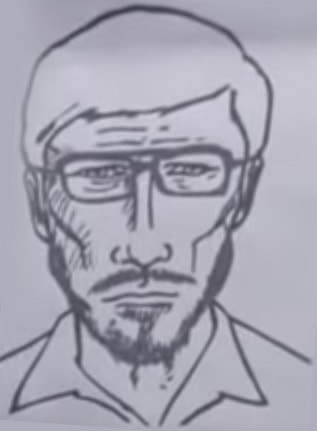 Mall staff were instructed to call the police if this man passed them a $20 bill. In May of 1983 he was seen in a book store within a Knoxville, Tennessee mall. The clerk called police, and James Mitchell Debardeleben was arrested. His driver’s license read Roger Blanchard, but the car he’d left at the mall was registered to James Jones. He refused to answer any questions. His fingerprints indicated the person they had arrested was James Mitchell Debardeleben; a man who had spent two years in jail for passing $100 counterfeit bills in the 1970s.
Mall staff were instructed to call the police if this man passed them a $20 bill. In May of 1983 he was seen in a book store within a Knoxville, Tennessee mall. The clerk called police, and James Mitchell Debardeleben was arrested. His driver’s license read Roger Blanchard, but the car he’d left at the mall was registered to James Jones. He refused to answer any questions. His fingerprints indicated the person they had arrested was James Mitchell Debardeleben; a man who had spent two years in jail for passing $100 counterfeit bills in the 1970s.
The first search of his home yielded nothing. The Secret Service realized it was a race against time. Passing counterfeit money is a charge Debardeleben could bail out on. If they didn’t find the plates before he was released, the plates would likely be destroyed before they could ever charge him. An observant agent noticed a folded white piece of paper in the yellow pages which marked storage units. They discovered he had a storage unit and immediately searched it for counterfeit printing plates. Beyond the plates, they found sets of women’s underwear, homemade audiotapes of rape and torture, photographs of sex slayings, and a death kit containing handcuffs, shoelaces, chains, whips, and K-Y jelly. They immediately involved the FBI.
They first found pictures of women under horrendous distress. They listened to a tape recording of a woman being tortured with a burning cigar. The agents described it as the most violent encounter they ever heard. “You could literally feel the pain,” one agent stated. The victim was begging him to let her die. Immediately, they decided they needed to locate her body. They were shocked to find that after being tortured for three days, she had been released and was still alive. Laurie Jensen had to travel to the agents’ office to listen to the tape, relive what had happened to her, and confirm that it was her voice in the recording. Laurie’s story
Laurie’s story
In July 1979, Laurie Jensen had been walking home from working at a convenience store at night when a car pulled up next to her with a flashing light. The driver flashed his I.D. and asked her to sit down in the car. A man dressed as a police officer questioned her about a robbery. He suddenly grabbed her arm and handcuffed her. She was blindfolded and driven to a house two hours from where she lived.
For three days she endured rape and abuse, being kept in a closet in between. Every time she saw the man he was naked except for a makeshift hood with rough eye holes. He took pictures and recorded their sessions, forcing her to tell him how much she was enjoying it. After three days he drove her back and let her go, alive.
Even though James Debardeleben refused to speak, he is the prime suspect in the following crimes:
Edna ‘Terry’ MacDonald – May 1971
The 52 year-old realtor left her office for an evening appointment with a Mr. Peter Morgan in Barrington, Rhode Island. When she didn’t return home a search was begun. She was found the next day in the basement of the home she had been showing, dead and hanging from a basement rafter. She had been strangled with her stockings, with no sign of robbery or rape as a motive. Police would have no leads at all until a similar crime years later was linked to James Debardeleben.
Elizabeth Mason – February 1979
In Fayetteville, North Carolina, the 31 year-old realtor arranged to show a man some homes. In one of the houses he pulled a gun and began pistol-whipping Elizabeth. He tied her up, strangled her and beat her head against the floor until she passed out. When she woke up she found that the man had taken her trousers and car. Despite being half-naked, she had not been sexually assaulted.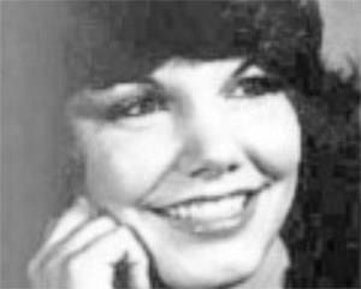 Realtor Elizabeth MasonDiane Overton - November 1980
Realtor Elizabeth MasonDiane Overton - November 1980
On November 1st, Debardeleben used the police car trick to pull over lone driver Diane Overton at 4 a.m. on a deserted residential road. Diane bit his hand and screamed for help but no one came out of their house. As he tried forcing her into the car she kicked the gear stick, stalling the engine. Jumping in the driver’s seat, Debardeleben drove at her multiple times, trying to run her over and eventually giving up.
Maria Santini - November 1980
Ten days later he tried again, this time using the brazen method of walking into a clothes store and pointing a gun at clerk Maria Santini. Walking her out to his car, she was forced to crouch in the footwell as he drove her to his home. There, he hogtied her and took photos before sexually abusing her. Santini was then driven to a remote area and set free.
As James Debardeleben never spoke about his crimes, we can only speculate as to why he let some of the women live.
Jean McPhaul – April 1982
Shreveport Times, 29th April 1982
A near carbon copy of Edna MacDonald’s murder 11 years prior, Jean McPhaul was a successful realtor from Bossier City, Louisiana. She took a Dr. Zack to see a home and never returned. The next morning she was discovered hanging from a rafter in the attic. She had been strangled and stabbed twice in the chest, but not raped.
A neighbor had seen Dr. Zack arrive at the property and provided enough detail for police to draw a composite that apparently looked very similar to The Mall Passer sketch. Among Debardeleben’s journal entries was a list of pseudonyms to use in the course of his crime, including the name ‘Dr. Zack.'
David Starr & Joe Rapini – April 1983
An unusual case that differs from Debardeleben’s normal m.o. but is again linked by certain journal entries, plus a witness description that resembles him. David Starr (bank manager at a local Columbia Savings Bank in Greece, Rochester) and his housemate Joe Rapini arrived home to be faced with a masked intruder pointing a gun. He held Rapini hostage and demanded Starr go to the bank and obtain a $70,000 ransom.
Starr came up with half the demand, and was told to leave it near a burned-out house. He then observed a woman driving a white car collect the ransom – another indication that some of Debardeleben’s partners had assisted him in his criminal endeavors. Despite Starr following instructions as properly as possible, Rapini was found dead later that day, shot in the heart and left in his car.
Trial
James Debardeleben was narcissistic enough to believe he could represent himself in court. He couldn’t resist the sadistic act of forcing one of his victims to endure listening to the audio recording of his abuse during cross-examination. Jurors could see that he was enjoying the power trip. When questioning the woman about being pulled into the car by her attacker, Debardeleben described the car and event in so much detail it was clear he had been there.
Although the trials could only cover a small portion of his crimes, James Debardeleben was hit with the harshest sentences possible in the court system – a total of 375 years. Most of the 40 different women identified in his photograph collection have never been identified.
Known Victims
Terry McDonald [1971 Barrington, RI] (charged but not tried)
Phillipa Voliner [1975] survived
Lucy Alexander [9/3/1978 DE] survived
Elizabeth Mason, 31 [2/4/1979 Fayetteville, NC] survived
Laurie Jensen, 20 [6/1/1979 Maryland] survived
Unnamed woman [10/10/1979] survived
Dianne Overton, 25 [11/1/1980] survived
Maria Santini, 27 [11/12/1980] survived
Jean McPhaul [4/27/1982 Bossier City, LA] (charged but not tried)
David Starr [4/13/1983 Greece, NY] survived
Joe Rapini [4/13/1983 Greece, NY] (suspected)
History
James Debardeleben was the 2nd of 3 children. His older sister’s whereabouts are unknown. His younger brother, Ralph, committed suicide. At 16, James was arrested for assaulting his mother. In violation of his probation, he purchased 2 handguns. He was arrested for sodomy, kidnapping and attempted murder. He joined the military to avoid incarceration, but was court-martialed for disorderly behavior at age 18, and discharged. He left his first wife after 3 weeks. After his 2nd wife had a child, he forced her to adopt out her second child. By the time he was on his 4th wife he had become progressively more sadistic. She was the subject of numerous torture tapes found in the storage unit. Unlike many serial killers, he refused to speak of his crimes. James Debardeleben died of pneumonia at the Federal Correctional Complex in Butner, North Carolina in 2011. A man has lived a terrible life, when his death only brings others comfort.
Thanks for listening,
Frank


Brainerd Dispatch, September 23, 2020Thursday, September 24 | 7:00 pm–8:30 pm
 The True Crime genre simultaneously scares and intrigues us. Join the Minnesota Humanities Center as we delve into our obsession with the darker side of human nature by exploring our fascination with stories of real life crime with panelists Amanda Jacobson of the Wine and Crime podcast, social psychologist Dr. Amanda Vicary, Forensic psychologist and author Frank Weber, and moderator Timya Owen, former president of Twin Cities Chapter of Sisters in Crime.
The True Crime genre simultaneously scares and intrigues us. Join the Minnesota Humanities Center as we delve into our obsession with the darker side of human nature by exploring our fascination with stories of real life crime with panelists Amanda Jacobson of the Wine and Crime podcast, social psychologist Dr. Amanda Vicary, Forensic psychologist and author Frank Weber, and moderator Timya Owen, former president of Twin Cities Chapter of Sisters in Crime.After the panel discussion, enjoy a night cap with special guests and panelists discussing how judges, juries, and forensic science come together, or not, to ensure justice is served.
6:45 p.m. Virtual log-in begins
7:00-8:00 p.m. Program
8:00-8:30 p.m. Q&A Session
This event will be recorded and contains mature content (conversations around crime and violence). Audience discretion is advised. Event is for ages 18+.
Registration Questions: registration@mnhum.org Saturday, September 26 | 7:00 pm-8:00 pm
 Frank F. Weber's "Lying Close" - Virtual
Frank F. Weber's "Lying Close" - VirtualLocal author and forensic psychologist Frank Weber will be discussing his latest book, Lying Close. Minnesota BCA Investigator Jon Frederick studies the list: A hunting accident. A country home break-in. The disappearance of a runaway. Not so shocking, until he considers all of these crimes occurred within 30 miles of each other, in less than a year’s time, in rural Minnesota. The summer of 2019 brings heat, rain, passion, and deception.
Register here: https://www.crowdcast.io/e/frank-webers-lying-close/register


 I love this painting on a grainery in Mankato. It's 135 feet tall.JAMES MITCHELL DEBARDELEBEN– FORGERY, KIDNAPPING, SERIAL KILLER-EVIL--DEAD
I love this painting on a grainery in Mankato. It's 135 feet tall.JAMES MITCHELL DEBARDELEBEN– FORGERY, KIDNAPPING, SERIAL KILLER-EVIL--DEADDebardeleben recorded torturing one victim as he pressed a burning cigar against her back. “Describe the pain, how does it hurt? Just exactly how does it hurt? I want you to tell me that you’re fascinated by the pain.“
How was Debardeleben caught?
From 1979 to 1983, the U.S. Secret Service were tracking the distribution of counterfeit $20 bills across 38 states. In 1979, the Secret Service began receiving reports from bank tellers and shop owners of fake $20 being distributed in eastern states. The same defects were visible on all notes, indicating that they were originating from the same source. The counterfeiter, known as “the Mall Passer,” would buy a low value item with the bills and take the change as his profit. By 1982, his fraud had increased to $130,000 per year across 38 states. It became the Counterfeit Division’s top priority.
 Mall staff were instructed to call the police if this man passed them a $20 bill. In May of 1983 he was seen in a book store within a Knoxville, Tennessee mall. The clerk called police, and James Mitchell Debardeleben was arrested. His driver’s license read Roger Blanchard, but the car he’d left at the mall was registered to James Jones. He refused to answer any questions. His fingerprints indicated the person they had arrested was James Mitchell Debardeleben; a man who had spent two years in jail for passing $100 counterfeit bills in the 1970s.
Mall staff were instructed to call the police if this man passed them a $20 bill. In May of 1983 he was seen in a book store within a Knoxville, Tennessee mall. The clerk called police, and James Mitchell Debardeleben was arrested. His driver’s license read Roger Blanchard, but the car he’d left at the mall was registered to James Jones. He refused to answer any questions. His fingerprints indicated the person they had arrested was James Mitchell Debardeleben; a man who had spent two years in jail for passing $100 counterfeit bills in the 1970s.The first search of his home yielded nothing. The Secret Service realized it was a race against time. Passing counterfeit money is a charge Debardeleben could bail out on. If they didn’t find the plates before he was released, the plates would likely be destroyed before they could ever charge him. An observant agent noticed a folded white piece of paper in the yellow pages which marked storage units. They discovered he had a storage unit and immediately searched it for counterfeit printing plates. Beyond the plates, they found sets of women’s underwear, homemade audiotapes of rape and torture, photographs of sex slayings, and a death kit containing handcuffs, shoelaces, chains, whips, and K-Y jelly. They immediately involved the FBI.
They first found pictures of women under horrendous distress. They listened to a tape recording of a woman being tortured with a burning cigar. The agents described it as the most violent encounter they ever heard. “You could literally feel the pain,” one agent stated. The victim was begging him to let her die. Immediately, they decided they needed to locate her body. They were shocked to find that after being tortured for three days, she had been released and was still alive. Laurie Jensen had to travel to the agents’ office to listen to the tape, relive what had happened to her, and confirm that it was her voice in the recording.
 Laurie’s story
Laurie’s storyIn July 1979, Laurie Jensen had been walking home from working at a convenience store at night when a car pulled up next to her with a flashing light. The driver flashed his I.D. and asked her to sit down in the car. A man dressed as a police officer questioned her about a robbery. He suddenly grabbed her arm and handcuffed her. She was blindfolded and driven to a house two hours from where she lived.
For three days she endured rape and abuse, being kept in a closet in between. Every time she saw the man he was naked except for a makeshift hood with rough eye holes. He took pictures and recorded their sessions, forcing her to tell him how much she was enjoying it. After three days he drove her back and let her go, alive.
Even though James Debardeleben refused to speak, he is the prime suspect in the following crimes:
Edna ‘Terry’ MacDonald – May 1971
The 52 year-old realtor left her office for an evening appointment with a Mr. Peter Morgan in Barrington, Rhode Island. When she didn’t return home a search was begun. She was found the next day in the basement of the home she had been showing, dead and hanging from a basement rafter. She had been strangled with her stockings, with no sign of robbery or rape as a motive. Police would have no leads at all until a similar crime years later was linked to James Debardeleben.
Elizabeth Mason – February 1979
In Fayetteville, North Carolina, the 31 year-old realtor arranged to show a man some homes. In one of the houses he pulled a gun and began pistol-whipping Elizabeth. He tied her up, strangled her and beat her head against the floor until she passed out. When she woke up she found that the man had taken her trousers and car. Despite being half-naked, she had not been sexually assaulted.
 Realtor Elizabeth MasonDiane Overton - November 1980
Realtor Elizabeth MasonDiane Overton - November 1980On November 1st, Debardeleben used the police car trick to pull over lone driver Diane Overton at 4 a.m. on a deserted residential road. Diane bit his hand and screamed for help but no one came out of their house. As he tried forcing her into the car she kicked the gear stick, stalling the engine. Jumping in the driver’s seat, Debardeleben drove at her multiple times, trying to run her over and eventually giving up.
Maria Santini - November 1980
Ten days later he tried again, this time using the brazen method of walking into a clothes store and pointing a gun at clerk Maria Santini. Walking her out to his car, she was forced to crouch in the footwell as he drove her to his home. There, he hogtied her and took photos before sexually abusing her. Santini was then driven to a remote area and set free.
As James Debardeleben never spoke about his crimes, we can only speculate as to why he let some of the women live.
Jean McPhaul – April 1982
Shreveport Times, 29th April 1982
A near carbon copy of Edna MacDonald’s murder 11 years prior, Jean McPhaul was a successful realtor from Bossier City, Louisiana. She took a Dr. Zack to see a home and never returned. The next morning she was discovered hanging from a rafter in the attic. She had been strangled and stabbed twice in the chest, but not raped.
A neighbor had seen Dr. Zack arrive at the property and provided enough detail for police to draw a composite that apparently looked very similar to The Mall Passer sketch. Among Debardeleben’s journal entries was a list of pseudonyms to use in the course of his crime, including the name ‘Dr. Zack.'
David Starr & Joe Rapini – April 1983
An unusual case that differs from Debardeleben’s normal m.o. but is again linked by certain journal entries, plus a witness description that resembles him. David Starr (bank manager at a local Columbia Savings Bank in Greece, Rochester) and his housemate Joe Rapini arrived home to be faced with a masked intruder pointing a gun. He held Rapini hostage and demanded Starr go to the bank and obtain a $70,000 ransom.
Starr came up with half the demand, and was told to leave it near a burned-out house. He then observed a woman driving a white car collect the ransom – another indication that some of Debardeleben’s partners had assisted him in his criminal endeavors. Despite Starr following instructions as properly as possible, Rapini was found dead later that day, shot in the heart and left in his car.
Trial
James Debardeleben was narcissistic enough to believe he could represent himself in court. He couldn’t resist the sadistic act of forcing one of his victims to endure listening to the audio recording of his abuse during cross-examination. Jurors could see that he was enjoying the power trip. When questioning the woman about being pulled into the car by her attacker, Debardeleben described the car and event in so much detail it was clear he had been there.
Although the trials could only cover a small portion of his crimes, James Debardeleben was hit with the harshest sentences possible in the court system – a total of 375 years. Most of the 40 different women identified in his photograph collection have never been identified.
Known Victims
Terry McDonald [1971 Barrington, RI] (charged but not tried)
Phillipa Voliner [1975] survived
Lucy Alexander [9/3/1978 DE] survived
Elizabeth Mason, 31 [2/4/1979 Fayetteville, NC] survived
Laurie Jensen, 20 [6/1/1979 Maryland] survived
Unnamed woman [10/10/1979] survived
Dianne Overton, 25 [11/1/1980] survived
Maria Santini, 27 [11/12/1980] survived
Jean McPhaul [4/27/1982 Bossier City, LA] (charged but not tried)
David Starr [4/13/1983 Greece, NY] survived
Joe Rapini [4/13/1983 Greece, NY] (suspected)
History
James Debardeleben was the 2nd of 3 children. His older sister’s whereabouts are unknown. His younger brother, Ralph, committed suicide. At 16, James was arrested for assaulting his mother. In violation of his probation, he purchased 2 handguns. He was arrested for sodomy, kidnapping and attempted murder. He joined the military to avoid incarceration, but was court-martialed for disorderly behavior at age 18, and discharged. He left his first wife after 3 weeks. After his 2nd wife had a child, he forced her to adopt out her second child. By the time he was on his 4th wife he had become progressively more sadistic. She was the subject of numerous torture tapes found in the storage unit. Unlike many serial killers, he refused to speak of his crimes. James Debardeleben died of pneumonia at the Federal Correctional Complex in Butner, North Carolina in 2011. A man has lived a terrible life, when his death only brings others comfort.
Thanks for listening,
Frank



Published on September 23, 2020 10:22
September 9, 2020
Robert Bruce
Lying Close arrives Friday!
Frank will be signing and selling books at the Shoppes of Little Falls on:
Friday, September 11 from 2:00 to 6:00 p.m., and
Saturday, September 12 from 11:00 to 3:00 p.m.
If it’s nice, Frank will be on the sidewalk in front of the store, and if raining inside. Masks and social distancing will be respected. Get your questions answered and a signed version of the already highly acclaimed Lying Close. The Shoppes of Little Falls is located at 102 1st Street SE in Little Falls and features a wide variety of arts and crafts. A hunting accident, a rural home break in, and the disappearance of a teen, all occur in a 30 mile stretch of rural Minnesota. Jon Frederick realizes they are all symptoms of a larger problem. Lying Close also involves a relationship between a white rural Christian, and a Somali Muslim woman in St. Cloud. It’s hard to believe in 2020 that there are still young people in the United States who can’t tell their parents who they’re dating because of hate. Lying Close is a thrilling mystery, with a forbidden love affair.
A hunting accident, a rural home break in, and the disappearance of a teen, all occur in a 30 mile stretch of rural Minnesota. Jon Frederick realizes they are all symptoms of a larger problem. Lying Close also involves a relationship between a white rural Christian, and a Somali Muslim woman in St. Cloud. It’s hard to believe in 2020 that there are still young people in the United States who can’t tell their parents who they’re dating because of hate. Lying Close is a thrilling mystery, with a forbidden love affair.
 Ether Man, Robert Bruce, done in by careful police work.
Ether Man, Robert Bruce, done in by careful police work.
The I-94 Murders is now available on audio. I reference “The Ether Man” in the book.
Robert “Howard” Bruce was “The Ether Man.”
Robert Bruce terrorized Norman, Oklahoma women from 1985 to 2006 , and continued victimizing women in Texas and New Mexico until he was caught in 2010. He broke into homes while women slept, and used a chemical-soaked rag to sedate them. Bruce told police he planned to attack one of his victims again. “I was going to sexually assault her again, but then didn’t do it because I thought it would be too traumatic for her,” Bruce told police. Instead he left her a note which read, “I could have raped you again.” (Sounds a lot like he was fine with traumatizing her again, but most likely was scared off.) Bruce told police he was addicted to what he referred to as “urban hunting.” Robert Bruce told police that he felt by putting out his victims, he was taking away their trauma.
Robert Bruce said he often felt guilty, but no remorse. He criticized fathers for not teaching their daughters to better protect themselves by locking doors and windows. Bruce did comment that he felt bad when he found out one of his victims was a 15-year-old girl. Bruce told police he would kiss the woman he had raped because he “didn’t want her to feel bad about herself.” He told police he got some of his ideas for brutal attacks from the 1971 movie, “A Clockwork Orange.”
The movie, A Clockwork Orange, is about a charismatic, antisocial delinquent whose interests include classical music , committing rape, theft and what is termed "ultra-violence". He is the leader of a small gang of thugs. The film chronicles the horrific crime spree of his gang, his capture, and attempted rehabilitation via an experimental psychological conditioning technique.
A Clockwork Orange was banned by the producer, Stanley Kubrick, himself in 1973. The rape of a Dutch girl shortly thereafter, at the hands of men singing "Singing in the Rain" as the rapist did in the movie, convinced many that Kubrick's decision was wise.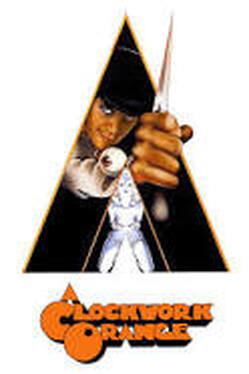 Robert Bruce was married.
Robert Bruce was married.
Joylynn Martinez had met Robert Bruce after a divorce that left her as a single parent. After a few dates she realized Bruce had been spying on her and had copied her phone bills. She broke up with him. Bruce came to her work and proposed to her in front of her peers. She agreed to marry him. They lived apart initially, as he worked 4 hours away. At times when they were out, he’d refer to women as ‘sluts’ by the way they dressed. When she called him on it, Bruce would immediately return to being polite.
Robert Bruce would encourage her to drink shots when they were out and she realized she was blacking out. One night, when looking for a tape Bruce had recorded of the children’s play, Joylynn put in the wrong tape and saw herself being raped by Bruce after she had been drugged. She watched only 30 seconds and shut it off. Robert drove her to an isolated area of the country to discuss the tape, and asked her how much she saw. She told him only half a minute. Looking back, she realizes that had she seen more, she may not have come back from that ride. Joylynn Martinez with Robert Bruce
Joylynn Martinez with Robert Bruce
One day when she was reading the paper, she came across an article about “The Ether Man” -- a man who put women out with ether and raped them. The composite sketch didn’t look like her husband. Still, a nagging voice suggested to her that maybe it was him. She told Bruce she wanted a divorce. Even though they owned a business together, she wanted out.
The next day, she was brought in for an interview by police asking if she’d ever seen him make a bomb. Bruce had apparently built a bomb and attempted to blow up a police officer’s house. She found out Robert Bruce was facing a misdemeanor “peeping Tom” charge, and he attempted to blow up the officer’s house. When they told her Bruce’s response to a misdemeanor charge didn’t make sense, she told them she believed he was “The Ether Man.”
Police officer Nathan Pruce, from Pueblo, Colorado broke the case. Office Pruce caught a man (later identified as Robert Bruce) peeping into people’s houses. Typically, a “peeping Tom” incident results in nothing more than a fine, but Pruce had a concerning feeling about Bruce so he decided to arrest Bruce, which resulted in Bruce’s DNA being taken. That choice connected Bruce to rapes across 3 states. The DNA that had been taken from the crime scenes of The Ether Man now had an origin. Robert Bruce attempted to blow Pruce’s house up with a propane bomb in 2009. Officer Nathan Pruce discovered the bomb before it could detonate.
Robert Bruce plead guilty in 2013 to 19 felony counts, including first-degree rape, sexual battery, forcible sodomy and first-degree burglary. He is now serving his 177 years at an unknown federal facility. Bruce was also sentenced to over 200 years for his crimes in New Mexico and Colorado.
I have to give Officer Nathan Pruce credit for acting on a hunch, and Jolyyn Martinez credit for her honesty to police, knowing that implicating her husband could put her life in danger.
Thanks for listening,
Frank
Still working on Burning Bridges…
















Frank will be signing and selling books at the Shoppes of Little Falls on:
Friday, September 11 from 2:00 to 6:00 p.m., and
Saturday, September 12 from 11:00 to 3:00 p.m.
If it’s nice, Frank will be on the sidewalk in front of the store, and if raining inside. Masks and social distancing will be respected. Get your questions answered and a signed version of the already highly acclaimed Lying Close. The Shoppes of Little Falls is located at 102 1st Street SE in Little Falls and features a wide variety of arts and crafts.
 A hunting accident, a rural home break in, and the disappearance of a teen, all occur in a 30 mile stretch of rural Minnesota. Jon Frederick realizes they are all symptoms of a larger problem. Lying Close also involves a relationship between a white rural Christian, and a Somali Muslim woman in St. Cloud. It’s hard to believe in 2020 that there are still young people in the United States who can’t tell their parents who they’re dating because of hate. Lying Close is a thrilling mystery, with a forbidden love affair.
A hunting accident, a rural home break in, and the disappearance of a teen, all occur in a 30 mile stretch of rural Minnesota. Jon Frederick realizes they are all symptoms of a larger problem. Lying Close also involves a relationship between a white rural Christian, and a Somali Muslim woman in St. Cloud. It’s hard to believe in 2020 that there are still young people in the United States who can’t tell their parents who they’re dating because of hate. Lying Close is a thrilling mystery, with a forbidden love affair.
 Ether Man, Robert Bruce, done in by careful police work.
Ether Man, Robert Bruce, done in by careful police work.The I-94 Murders is now available on audio. I reference “The Ether Man” in the book.
Robert “Howard” Bruce was “The Ether Man.”
Robert Bruce terrorized Norman, Oklahoma women from 1985 to 2006 , and continued victimizing women in Texas and New Mexico until he was caught in 2010. He broke into homes while women slept, and used a chemical-soaked rag to sedate them. Bruce told police he planned to attack one of his victims again. “I was going to sexually assault her again, but then didn’t do it because I thought it would be too traumatic for her,” Bruce told police. Instead he left her a note which read, “I could have raped you again.” (Sounds a lot like he was fine with traumatizing her again, but most likely was scared off.) Bruce told police he was addicted to what he referred to as “urban hunting.” Robert Bruce told police that he felt by putting out his victims, he was taking away their trauma.
Robert Bruce said he often felt guilty, but no remorse. He criticized fathers for not teaching their daughters to better protect themselves by locking doors and windows. Bruce did comment that he felt bad when he found out one of his victims was a 15-year-old girl. Bruce told police he would kiss the woman he had raped because he “didn’t want her to feel bad about herself.” He told police he got some of his ideas for brutal attacks from the 1971 movie, “A Clockwork Orange.”
The movie, A Clockwork Orange, is about a charismatic, antisocial delinquent whose interests include classical music , committing rape, theft and what is termed "ultra-violence". He is the leader of a small gang of thugs. The film chronicles the horrific crime spree of his gang, his capture, and attempted rehabilitation via an experimental psychological conditioning technique.
A Clockwork Orange was banned by the producer, Stanley Kubrick, himself in 1973. The rape of a Dutch girl shortly thereafter, at the hands of men singing "Singing in the Rain" as the rapist did in the movie, convinced many that Kubrick's decision was wise.
 Robert Bruce was married.
Robert Bruce was married.Joylynn Martinez had met Robert Bruce after a divorce that left her as a single parent. After a few dates she realized Bruce had been spying on her and had copied her phone bills. She broke up with him. Bruce came to her work and proposed to her in front of her peers. She agreed to marry him. They lived apart initially, as he worked 4 hours away. At times when they were out, he’d refer to women as ‘sluts’ by the way they dressed. When she called him on it, Bruce would immediately return to being polite.
Robert Bruce would encourage her to drink shots when they were out and she realized she was blacking out. One night, when looking for a tape Bruce had recorded of the children’s play, Joylynn put in the wrong tape and saw herself being raped by Bruce after she had been drugged. She watched only 30 seconds and shut it off. Robert drove her to an isolated area of the country to discuss the tape, and asked her how much she saw. She told him only half a minute. Looking back, she realizes that had she seen more, she may not have come back from that ride.
 Joylynn Martinez with Robert Bruce
Joylynn Martinez with Robert BruceOne day when she was reading the paper, she came across an article about “The Ether Man” -- a man who put women out with ether and raped them. The composite sketch didn’t look like her husband. Still, a nagging voice suggested to her that maybe it was him. She told Bruce she wanted a divorce. Even though they owned a business together, she wanted out.
The next day, she was brought in for an interview by police asking if she’d ever seen him make a bomb. Bruce had apparently built a bomb and attempted to blow up a police officer’s house. She found out Robert Bruce was facing a misdemeanor “peeping Tom” charge, and he attempted to blow up the officer’s house. When they told her Bruce’s response to a misdemeanor charge didn’t make sense, she told them she believed he was “The Ether Man.”

Police officer Nathan Pruce, from Pueblo, Colorado broke the case. Office Pruce caught a man (later identified as Robert Bruce) peeping into people’s houses. Typically, a “peeping Tom” incident results in nothing more than a fine, but Pruce had a concerning feeling about Bruce so he decided to arrest Bruce, which resulted in Bruce’s DNA being taken. That choice connected Bruce to rapes across 3 states. The DNA that had been taken from the crime scenes of The Ether Man now had an origin. Robert Bruce attempted to blow Pruce’s house up with a propane bomb in 2009. Officer Nathan Pruce discovered the bomb before it could detonate.
Robert Bruce plead guilty in 2013 to 19 felony counts, including first-degree rape, sexual battery, forcible sodomy and first-degree burglary. He is now serving his 177 years at an unknown federal facility. Bruce was also sentenced to over 200 years for his crimes in New Mexico and Colorado.
I have to give Officer Nathan Pruce credit for acting on a hunch, and Jolyyn Martinez credit for her honesty to police, knowing that implicating her husband could put her life in danger.
Thanks for listening,
Frank
Still working on Burning Bridges…

















Published on September 09, 2020 05:11
September 1, 2020
Salvatore Riina
Murder Book and The I-94 Murders are now on sale at
Audible
, and it will be available on iTunes and Amazon within the next few days.  Actor Jonathan Strait is the reader on the audio versions of Murder Book and The I-94 Murders. I auditioned a variety of readers, and Jonathan is outstanding. He enjoys the thrillers, he researches the material and he understands how the books should be read. Jonathan Strait is impressive!
Actor Jonathan Strait is the reader on the audio versions of Murder Book and The I-94 Murders. I auditioned a variety of readers, and Jonathan is outstanding. He enjoys the thrillers, he researches the material and he understands how the books should be read. Jonathan Strait is impressive!
Thank you for the rush of preorders for Lying Close! I will be receiving a second shipment by the end of this week and will be sending out the remaining preorders. Order your copy here!
Possible Burning Bridges cover:
 Do you want to hear about a terrible person? Mob boss: Salvatore Riina
Do you want to hear about a terrible person? Mob boss: Salvatore Riina 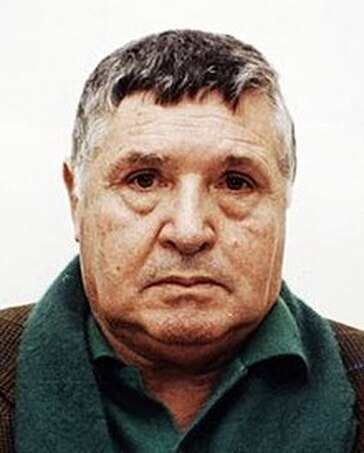 Mugshot of Totò Riina after his arrest in 1993 Born
Mugshot of Totò Riina after his arrest in 1993 Born
November 16, 1930 in Corleone, Sicily, Italy
Died
November 17, 2017 (aged 87)
Occupation
Mafia boss of the Corleone family
Conviction(s)
Mafia association, Multiple murders
Penalty
26 Life Sentences
Salvatore Riina is believed to the basis of the Godfather movies. Riina is an example of how real life killers and mobsters can be worse than the movies. Riina was the mob boss who ordered the bombing of Train 904 on December 23, 1984. He maximized the number of casualties by catching travelers headed home for Christmas, and having the bomb detonate while the train was in a tunnel.
And you want to know why he did it? To create a distraction. Riina was concerned over his mob being investigated, and wanted to try to get numerous investigators reassigned by faking a terrorist attack. The train was five miles into a tunnel and moving 93 miles an hour when the bomb was detonated. 16 people died and 266 people were wounded. Its shock wave, reflected by the tunnel sides, blew out all the window glass and internal doors, blasting shrapnel shards into the compartments. The passengers were scared and stranded in darkness, in the cold Apennine winter.
Riina was called "Totò the Short," “The Beast,” and “The Boss of Bosses.” Riina was an Italian mobster and head of the Sicilian Mafia, the Corleone family. Riina is known for a ruthless murder campaign that reached a peak in the early 1990s with the assassinations of Antimafia Commission prosecutors Giovanni Falcone and Paolo Borsellino, resulting in widespread public outcry and a major crackdown by the authorities.
In violation of established Mafia codes, Riina advocated the killing of women and children, and killed blameless members of the public, solely to distract law enforcement agencies. Hitman Giovanni Brusca estimated he murdered between 100 and 200 people on behalf of Riina. Although this scorched-earth policy neutralized any internal threat to Riina's position, he brought his organization into open confrontation with the state. Prior to Riina’s reign of power, many people in Sicily didn’t believe the mafia was real-- instead simply an urban legend. After Riina’s arrest in 1993, he ordered bombings of churches and art museums. He died in 2017, and never repented.
Growing up in Corleone:
Salvatore Riina was raised in poverty in Palermo, Italy. His father died after finding an unexploded bomb and taking it apart to sell as scrap metal. The bomb exploded, killing his father and 7-year-old brother. At the age of 19, Riina told his uncle he wanted to join the mob, so his uncle had him strangle to death a tied-up man with his bare hands to prove he was ready. Riina was sentenced to 12 years in prison, at 19, for killing a man during a fight. He was released in 1956.
The head of the Mafia family in Corleone was Michele Navarra until 1958, when he was shot dead on the orders of Luciano Leggio, a ruthless 33-year-old Mafioso, who subsequently became the new boss. (Luciano Leggioi is pictured below.)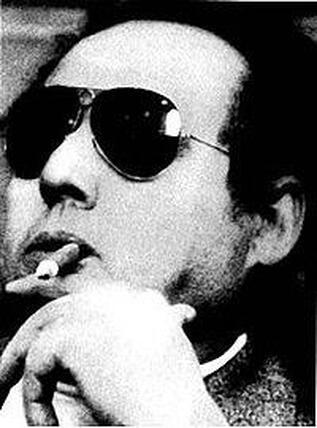 Riina, Leggio and Provenzano spent Riina’s post prison years hunting down and killing dozens of Navarra's supporters. The three were forced to go into hiding due to warrants. Riina and Leggio were arrested and tried in 1969 for murders carried out in the early 1960’s. They were acquitted because of intimidation of the jurors and witnesses. Riina went into hiding later that year, after he was indicted on another murder charge. Riina remained a fugitive for the next 23 years.
Riina, Leggio and Provenzano spent Riina’s post prison years hunting down and killing dozens of Navarra's supporters. The three were forced to go into hiding due to warrants. Riina and Leggio were arrested and tried in 1969 for murders carried out in the early 1960’s. They were acquitted because of intimidation of the jurors and witnesses. Riina went into hiding later that year, after he was indicted on another murder charge. Riina remained a fugitive for the next 23 years.
When Luciano Leggio was arrested in 1974, for the 1958 murder of Navarra, Salvotore Riina became the head of the Corleonesi. The Corleonesi's primary rivals were Stefano Bontade, Salvatore Inzerillo and Tano Badalamenti, bosses of various powerful Palermo Mafia families. Between 1981 and 1983, the Second Mafia War was instigated by Riina. Bontade and Inzerillo, together with many associates and members of both their Mafia and blood families, were killed. There were up to a thousand killings during this period as Riina and the Corleonesi, together with their allies, wiped out their rivals. By the end of the war, the Corleonesi were effectively ruling the Mafia. Over the next few years, Riina increased his influence by eliminating the Corleonesi's allies, such as Filippo Marchese, Giuseppe Greco and Rosario Riccobono.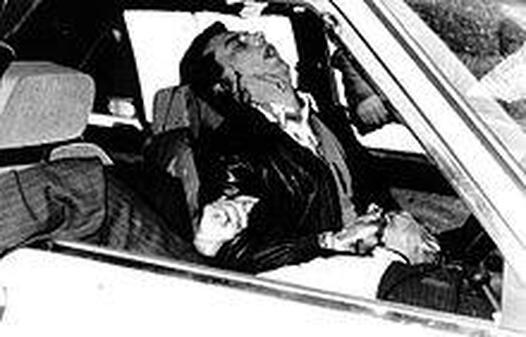 The bodies of Pio La Torre and Rosario Di Salvo, murdered by the Mafia
The bodies of Pio La Torre and Rosario Di Salvo, murdered by the Mafia
Riina’s predecessors kept a low profile, leading some in law enforcement to question the very existence of the Mafia. Riina ordered the murders of judges, policemen and prosecutors in an attempt to terrify the authorities. A law to create a new offence of Mafia association and confiscate Mafia assets was introduced by Pio La Torre, secretary of the Italian Communist Party in Sicily. La Torre was murdered on April 30, 1982. In May of 1982, the Italian government sent Carlo Alberto Dalla Chiesa to Sicily, with orders to crush the Mafia. However, not long after arriving, on September 3, 1982, he was gunned down in the city centre with his wife, Emanuela Setti Carraro, and his driver bodyguard, Domenico Russo.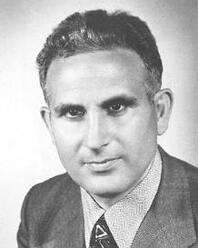 Pio La Torre
Pio La Torre  Carlo Alberto Dalla Chiesa
Carlo Alberto Dalla Chiesa 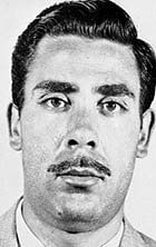 Thomaso Buscetta
Thomaso Buscetta
On September 11, 1982, mafioso Thomaso Buscetta's sons, Benedetto and Antonio, disappeared, never to be found again, which prompted his collaboration with Italian authorities. (During a trial in 1993, the Mafia member Salvatore Cancemi confessed to Buscetta that he had strangled two of Buscetta's sons to death. After the trial, Buscetta embraced Cancemi and said: "You could not refuse the order. I forgive you because I know what it means to be in Cosa Nostra.) This was followed by the deaths of his brother Vincenzo, son-in-law Giuseppe Genova, brother-in-law Pietro and four of his nephews, Domenico and Benedetto Buscetta, and Orazio and Antonio D'Amico. So when Buscetta was arrested he asked to talk to the anti-Mafia judge Giovanni Falcone, and began his life as an informant, a pentito .
Thomaso Buscetta was the first high-profile Sicilian Mafiosi to become an informant. Italy built a bunker in the basement of a prison in Sicily to hold the trials to protect the judges, prosecutors and juries. Buscetta helped judges Falcone and Paolo Borsellino achieve success in the fight against organized crime that led to 475 Mafia members indicted, and 338 convicted in the Maxi Trial.
In an attempt to divert investigative resources away from Buscetta's key revelations, Salvatore Riina ordered a terrorist-style atrocity, the December 23, 1984 Train 904 bombing. It became known as the "Christmas Massacre" and was initially attributed to political extremists. It was several years later, when police discovered the same type of explosives used in Train 904 while searching a mafia hideout, that it became apparent the Mafia had been behind the attack.
Riina was not done destroying families:
As part of the Maxi Trial, Salvatore Riina was given two life sentences in absentia. Riina pinned his hopes on the lengthy appeal process, and he suspended the campaign of murders against officials while the cases went to higher courts. When the convictions were upheld by the Supreme Court in January 1992, Riina reacted by ordering the assassination of Politician Salvatore Lima and Judge Giovanni Falcone.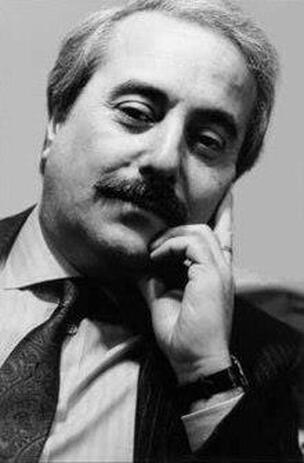 Judge Giovanni Falcone
Judge Giovanni Falcone  Parliament member: Salvatore Lima
Parliament member: Salvatore Lima
On May 23, 1992, Falcone, his wife Francesca Morvillo and three police officers died in the Capaci bombing outside Palermo. Two months later, Borsellino was killed along with five police officers in the entrance to his mother's apartment block by a car bomb. Ignazio Salvo, who had advised Riina against killing Falcone, was himself murdered on September 17,1992. The public was outraged, both at the Mafia and also the politicians who failed to protect Falcone and Borsellino. The Italian government arranged for a massive crackdown against the Mafia in response.
The bizarre morality of the Mafia:
The large killing of innocents was acceptable, but leaving your family was not.
Salvatore Riina reprimanded Balduccio Di Maggio, an ambitious Mafioso for leaving his wife and children for a mistress, telling him he would never be made a full boss. Knowing Riina would order the death of subordinates whom he considered unreliable, Di Maggio fled Sicily and collaborated with the authorities. At the entrance to a complex of villas, Di Maggio identified Riina's wife. On January 15, 1993, Salvatore Riina was arrested at his villa in Palermo. He had been a fugitive for 23 years.
Riina continued to order Terror attacks from prison:
After Riina was captured in January 1993, numerous terror attacks were ordered as a warning to its members to not turn state's witness. On May 14, 1993, television host Maurizio Costanzo, who had expressed delight at the arrest of Riina, was almost killed by a bomb as he drove down a Rome street; 23 people were injured. The explosion was part of a series. On May 27, 1993, a bomb under the Florence Torre dei Pulci killed five people: Fabrizio Nencini and his wife Angelamaria; their daughters, nine-year-old Nadia and two-month-old Caterina; and Dario Capolicchio, aged 20. Thirty-three people were injured. Attacks on art galleries and churches left ten dead and many injured, causing outrage among Italians. Riina behind bars in court after his arrest in 1993
Riina behind bars in court after his arrest in 1993
Riina was held in a maximum-security prison in Parma with limited contact with the outside world in order to prevent him from running his organization from behind bars. It is suspected that he got orders out through guards. Over $125,000,000 in assets were confiscated from Riina, and his vast mansion was also acquired by the crusading anti-Mafia mayor of Corleone in 1997. The mansion was subsequently converted into a police office and opened in 2015.
Two of Riina’s sons, Giovanni and Giuseppe, followed in their father's footsteps and were imprisoned. In November 2001, a court in Palermo sentenced 24-year-old Giovanni to life in prison for four murders. The story is that Riina had his son commit his first murder at 17, to break him in to the mafia. On December 31, 2004, Riina's youngest son, Giuseppe, was sentenced in June 2002, to 14 years for various crimes, including Mafia association, extortion and money laundering. He was found to have established Mafia-controlled companies to hide money from protection rackets, drug-trafficking and tenders for public building contracts on the island.
All bad things must end…
Salvatore Riina died on November 17, 2017, after his 87th birthday, in the prison unit of the Maggiore Hospital in Parma. At the time of his death, he was still considered to be the head of the Cosa Nostra. Riina was refused a public funeral by the church. He was privately buried in his hometown of Corleone.
Who are the heroes? Journalists led the attack on the mafia, and people paid with their lives for it. Prosecutors, judges, juries all took a huge risk in convicting mafia members. Despite the cruelty, there were people willing to stand up for morality and they are deserving of our utmost respect. Thank you!
And thanks for listening,
Frank
For more information on Salvatore Riina you may wish to check out the Wine & Crime podcast.
 One of my very favorite musicians died of a heroin overdose last week at age 38—Justin Townes Earle. He was the son of Steve Earle.
One of my very favorite musicians died of a heroin overdose last week at age 38—Justin Townes Earle. He was the son of Steve Earle.
Thank you for the great music Justin!
 Actor Jonathan Strait is the reader on the audio versions of Murder Book and The I-94 Murders. I auditioned a variety of readers, and Jonathan is outstanding. He enjoys the thrillers, he researches the material and he understands how the books should be read. Jonathan Strait is impressive!
Actor Jonathan Strait is the reader on the audio versions of Murder Book and The I-94 Murders. I auditioned a variety of readers, and Jonathan is outstanding. He enjoys the thrillers, he researches the material and he understands how the books should be read. Jonathan Strait is impressive!Thank you for the rush of preorders for Lying Close! I will be receiving a second shipment by the end of this week and will be sending out the remaining preorders. Order your copy here!

Possible Burning Bridges cover:
 Do you want to hear about a terrible person? Mob boss: Salvatore Riina
Do you want to hear about a terrible person? Mob boss: Salvatore Riina  Mugshot of Totò Riina after his arrest in 1993 Born
Mugshot of Totò Riina after his arrest in 1993 BornNovember 16, 1930 in Corleone, Sicily, Italy
Died
November 17, 2017 (aged 87)
Occupation
Mafia boss of the Corleone family
Conviction(s)
Mafia association, Multiple murders
Penalty
26 Life Sentences
Salvatore Riina is believed to the basis of the Godfather movies. Riina is an example of how real life killers and mobsters can be worse than the movies. Riina was the mob boss who ordered the bombing of Train 904 on December 23, 1984. He maximized the number of casualties by catching travelers headed home for Christmas, and having the bomb detonate while the train was in a tunnel.
And you want to know why he did it? To create a distraction. Riina was concerned over his mob being investigated, and wanted to try to get numerous investigators reassigned by faking a terrorist attack. The train was five miles into a tunnel and moving 93 miles an hour when the bomb was detonated. 16 people died and 266 people were wounded. Its shock wave, reflected by the tunnel sides, blew out all the window glass and internal doors, blasting shrapnel shards into the compartments. The passengers were scared and stranded in darkness, in the cold Apennine winter.
Riina was called "Totò the Short," “The Beast,” and “The Boss of Bosses.” Riina was an Italian mobster and head of the Sicilian Mafia, the Corleone family. Riina is known for a ruthless murder campaign that reached a peak in the early 1990s with the assassinations of Antimafia Commission prosecutors Giovanni Falcone and Paolo Borsellino, resulting in widespread public outcry and a major crackdown by the authorities.
In violation of established Mafia codes, Riina advocated the killing of women and children, and killed blameless members of the public, solely to distract law enforcement agencies. Hitman Giovanni Brusca estimated he murdered between 100 and 200 people on behalf of Riina. Although this scorched-earth policy neutralized any internal threat to Riina's position, he brought his organization into open confrontation with the state. Prior to Riina’s reign of power, many people in Sicily didn’t believe the mafia was real-- instead simply an urban legend. After Riina’s arrest in 1993, he ordered bombings of churches and art museums. He died in 2017, and never repented.
Growing up in Corleone:
Salvatore Riina was raised in poverty in Palermo, Italy. His father died after finding an unexploded bomb and taking it apart to sell as scrap metal. The bomb exploded, killing his father and 7-year-old brother. At the age of 19, Riina told his uncle he wanted to join the mob, so his uncle had him strangle to death a tied-up man with his bare hands to prove he was ready. Riina was sentenced to 12 years in prison, at 19, for killing a man during a fight. He was released in 1956.
The head of the Mafia family in Corleone was Michele Navarra until 1958, when he was shot dead on the orders of Luciano Leggio, a ruthless 33-year-old Mafioso, who subsequently became the new boss. (Luciano Leggioi is pictured below.)
 Riina, Leggio and Provenzano spent Riina’s post prison years hunting down and killing dozens of Navarra's supporters. The three were forced to go into hiding due to warrants. Riina and Leggio were arrested and tried in 1969 for murders carried out in the early 1960’s. They were acquitted because of intimidation of the jurors and witnesses. Riina went into hiding later that year, after he was indicted on another murder charge. Riina remained a fugitive for the next 23 years.
Riina, Leggio and Provenzano spent Riina’s post prison years hunting down and killing dozens of Navarra's supporters. The three were forced to go into hiding due to warrants. Riina and Leggio were arrested and tried in 1969 for murders carried out in the early 1960’s. They were acquitted because of intimidation of the jurors and witnesses. Riina went into hiding later that year, after he was indicted on another murder charge. Riina remained a fugitive for the next 23 years.When Luciano Leggio was arrested in 1974, for the 1958 murder of Navarra, Salvotore Riina became the head of the Corleonesi. The Corleonesi's primary rivals were Stefano Bontade, Salvatore Inzerillo and Tano Badalamenti, bosses of various powerful Palermo Mafia families. Between 1981 and 1983, the Second Mafia War was instigated by Riina. Bontade and Inzerillo, together with many associates and members of both their Mafia and blood families, were killed. There were up to a thousand killings during this period as Riina and the Corleonesi, together with their allies, wiped out their rivals. By the end of the war, the Corleonesi were effectively ruling the Mafia. Over the next few years, Riina increased his influence by eliminating the Corleonesi's allies, such as Filippo Marchese, Giuseppe Greco and Rosario Riccobono.
 The bodies of Pio La Torre and Rosario Di Salvo, murdered by the Mafia
The bodies of Pio La Torre and Rosario Di Salvo, murdered by the Mafia Riina’s predecessors kept a low profile, leading some in law enforcement to question the very existence of the Mafia. Riina ordered the murders of judges, policemen and prosecutors in an attempt to terrify the authorities. A law to create a new offence of Mafia association and confiscate Mafia assets was introduced by Pio La Torre, secretary of the Italian Communist Party in Sicily. La Torre was murdered on April 30, 1982. In May of 1982, the Italian government sent Carlo Alberto Dalla Chiesa to Sicily, with orders to crush the Mafia. However, not long after arriving, on September 3, 1982, he was gunned down in the city centre with his wife, Emanuela Setti Carraro, and his driver bodyguard, Domenico Russo.
 Pio La Torre
Pio La Torre  Carlo Alberto Dalla Chiesa
Carlo Alberto Dalla Chiesa  Thomaso Buscetta
Thomaso Buscetta On September 11, 1982, mafioso Thomaso Buscetta's sons, Benedetto and Antonio, disappeared, never to be found again, which prompted his collaboration with Italian authorities. (During a trial in 1993, the Mafia member Salvatore Cancemi confessed to Buscetta that he had strangled two of Buscetta's sons to death. After the trial, Buscetta embraced Cancemi and said: "You could not refuse the order. I forgive you because I know what it means to be in Cosa Nostra.) This was followed by the deaths of his brother Vincenzo, son-in-law Giuseppe Genova, brother-in-law Pietro and four of his nephews, Domenico and Benedetto Buscetta, and Orazio and Antonio D'Amico. So when Buscetta was arrested he asked to talk to the anti-Mafia judge Giovanni Falcone, and began his life as an informant, a pentito .
Thomaso Buscetta was the first high-profile Sicilian Mafiosi to become an informant. Italy built a bunker in the basement of a prison in Sicily to hold the trials to protect the judges, prosecutors and juries. Buscetta helped judges Falcone and Paolo Borsellino achieve success in the fight against organized crime that led to 475 Mafia members indicted, and 338 convicted in the Maxi Trial.
In an attempt to divert investigative resources away from Buscetta's key revelations, Salvatore Riina ordered a terrorist-style atrocity, the December 23, 1984 Train 904 bombing. It became known as the "Christmas Massacre" and was initially attributed to political extremists. It was several years later, when police discovered the same type of explosives used in Train 904 while searching a mafia hideout, that it became apparent the Mafia had been behind the attack.
Riina was not done destroying families:
As part of the Maxi Trial, Salvatore Riina was given two life sentences in absentia. Riina pinned his hopes on the lengthy appeal process, and he suspended the campaign of murders against officials while the cases went to higher courts. When the convictions were upheld by the Supreme Court in January 1992, Riina reacted by ordering the assassination of Politician Salvatore Lima and Judge Giovanni Falcone.
 Judge Giovanni Falcone
Judge Giovanni Falcone  Parliament member: Salvatore Lima
Parliament member: Salvatore Lima On May 23, 1992, Falcone, his wife Francesca Morvillo and three police officers died in the Capaci bombing outside Palermo. Two months later, Borsellino was killed along with five police officers in the entrance to his mother's apartment block by a car bomb. Ignazio Salvo, who had advised Riina against killing Falcone, was himself murdered on September 17,1992. The public was outraged, both at the Mafia and also the politicians who failed to protect Falcone and Borsellino. The Italian government arranged for a massive crackdown against the Mafia in response.
The bizarre morality of the Mafia:
The large killing of innocents was acceptable, but leaving your family was not.
Salvatore Riina reprimanded Balduccio Di Maggio, an ambitious Mafioso for leaving his wife and children for a mistress, telling him he would never be made a full boss. Knowing Riina would order the death of subordinates whom he considered unreliable, Di Maggio fled Sicily and collaborated with the authorities. At the entrance to a complex of villas, Di Maggio identified Riina's wife. On January 15, 1993, Salvatore Riina was arrested at his villa in Palermo. He had been a fugitive for 23 years.
Riina continued to order Terror attacks from prison:
After Riina was captured in January 1993, numerous terror attacks were ordered as a warning to its members to not turn state's witness. On May 14, 1993, television host Maurizio Costanzo, who had expressed delight at the arrest of Riina, was almost killed by a bomb as he drove down a Rome street; 23 people were injured. The explosion was part of a series. On May 27, 1993, a bomb under the Florence Torre dei Pulci killed five people: Fabrizio Nencini and his wife Angelamaria; their daughters, nine-year-old Nadia and two-month-old Caterina; and Dario Capolicchio, aged 20. Thirty-three people were injured. Attacks on art galleries and churches left ten dead and many injured, causing outrage among Italians.
 Riina behind bars in court after his arrest in 1993
Riina behind bars in court after his arrest in 1993 Riina was held in a maximum-security prison in Parma with limited contact with the outside world in order to prevent him from running his organization from behind bars. It is suspected that he got orders out through guards. Over $125,000,000 in assets were confiscated from Riina, and his vast mansion was also acquired by the crusading anti-Mafia mayor of Corleone in 1997. The mansion was subsequently converted into a police office and opened in 2015.
Two of Riina’s sons, Giovanni and Giuseppe, followed in their father's footsteps and were imprisoned. In November 2001, a court in Palermo sentenced 24-year-old Giovanni to life in prison for four murders. The story is that Riina had his son commit his first murder at 17, to break him in to the mafia. On December 31, 2004, Riina's youngest son, Giuseppe, was sentenced in June 2002, to 14 years for various crimes, including Mafia association, extortion and money laundering. He was found to have established Mafia-controlled companies to hide money from protection rackets, drug-trafficking and tenders for public building contracts on the island.
All bad things must end…
Salvatore Riina died on November 17, 2017, after his 87th birthday, in the prison unit of the Maggiore Hospital in Parma. At the time of his death, he was still considered to be the head of the Cosa Nostra. Riina was refused a public funeral by the church. He was privately buried in his hometown of Corleone.
Who are the heroes? Journalists led the attack on the mafia, and people paid with their lives for it. Prosecutors, judges, juries all took a huge risk in convicting mafia members. Despite the cruelty, there were people willing to stand up for morality and they are deserving of our utmost respect. Thank you!
And thanks for listening,
Frank
For more information on Salvatore Riina you may wish to check out the Wine & Crime podcast.

 One of my very favorite musicians died of a heroin overdose last week at age 38—Justin Townes Earle. He was the son of Steve Earle.
One of my very favorite musicians died of a heroin overdose last week at age 38—Justin Townes Earle. He was the son of Steve Earle.Thank you for the great music Justin!
Published on September 01, 2020 11:01
August 22, 2020
Frank Weber on Oxygen’s Investigative show-- Snapped
 I would like to thank everyone for my continued book sales, which are occurring predominantly by word of mouth at the present time. I was contacted by the producers of Snapped, which is a very popular investigative show on the Oxygen channel, regarding the book I’m currently writing: Burning Bridges. They will be flying a crew in next week to interview me on the case, and I’ll let people know when the show will air on national television.
I would like to thank everyone for my continued book sales, which are occurring predominantly by word of mouth at the present time. I was contacted by the producers of Snapped, which is a very popular investigative show on the Oxygen channel, regarding the book I’m currently writing: Burning Bridges. They will be flying a crew in next week to interview me on the case, and I’ll let people know when the show will air on national television.In addition, I’ve been fortunate to have been asked to participate in a couple of virtual events. I’ve been asked to be on a panel which addresses our obsession with True Crime, with True Crime podcaster, Amanda Jacobson, and University of Illinois Wesleyan Professor &True Crime Researcher, Dr. Amanda Vicary.
Thursday, September 24, 2020, virtual event at 7:00 p.m., titled True Crime: Why Are We So Obsessed? Panel discussion involving Forensic Psychologist, Frank Weber, Dr. Vicary and Amanda Jacobson,moderated by Timya Owen, former President of Sisters in Crime, MN Chapter. The event is sponsored by Minnesota Humanities Center, 987 Ivy Avenue East, Saint Paul, Minnesota.
From 8:00 – 8:30 p.m. The After Show – three discussion breakout rooms – LIVE
· Frank Weber with John Harrington (discussants) – Room 1 Hosted Topic: TBD
· Dr. Vicary with Judge Brandsford (discussants) : Room 2 Hosted Topic: TBD
· Amanda Jacobson with Madeleine Baran (discussants): Room 3 Hosted Topic: TBD
 Saturday, September 26, 2020, 7:00 to 7:45 P.M. virtual event at Once Upon a Crime. To register for this free event sign in at:
https://www.crowdcast.io/e/frank-webers-lying-close/register
. Frank will be discussing his newest True Crime thriller, Lying Close and answering any questions posted related to his writing or forensic work. Once Upon a Crime is located at 604 West 26th Street, Minneapolis, MN 55405, but you can enjoy this virtual event and purchase the book in the leisure of your home. Frank will be available to answer questions during and after the presentation.
Saturday, September 26, 2020, 7:00 to 7:45 P.M. virtual event at Once Upon a Crime. To register for this free event sign in at:
https://www.crowdcast.io/e/frank-webers-lying-close/register
. Frank will be discussing his newest True Crime thriller, Lying Close and answering any questions posted related to his writing or forensic work. Once Upon a Crime is located at 604 West 26th Street, Minneapolis, MN 55405, but you can enjoy this virtual event and purchase the book in the leisure of your home. Frank will be available to answer questions during and after the presentation.As I’ve shared, Burning Bridges is based on a homicide that occurred in St. Cloud. The young woman sitting on the bridge is Kloe Kapsner. Her character in the book is Harper Rowe, a young woman who looks for her biological father, after her mother dies. Her mother had requested she never look him up. She discovers her father, Billy Blaze, is a man with a terrible history. (I include his actual criminal history in the book.)
 And to top it off, her father has now disappeared. Harper enlists the help of Jon and Serena Frederick in finding her father, and with solving the ensuing murder mystery.
And to top it off, her father has now disappeared. Harper enlists the help of Jon and Serena Frederick in finding her father, and with solving the ensuing murder mystery. Here is your chance to give feedback on the cover. The front cover features the character Harper Rowe (Kloe Kapsner) dangling her feet over the Mississippi river. The picture involves a scene in the book where she is sitting on a bridge contemplating cutting ties to her past (burning bridges). The back cover features the Serena character (Elise Yates) celebrating a catharsis as the case is resolved. Please let me know which front and back cover shots you like best. (Send me the number.)
Front Cover:
 1
1  2
2  3
3  4
4  5
5  6
6  7
7  8
8  9
9  10
10  11
11  12
12  13
13  14
14  15
15  16
16  17
17  18
18  19
19  20 Back Cover:
20 Back Cover:  21
21  22
22  23
23  24
24  25
25  26
26  27
27  28
28  29
29  30
30 Thank you!
Frank
As someone who has sang lyrics wrong for years, I enjoyed the following video:
And if you ever felt that all hit songs sound alike, it’s because they do. Listen:
Published on August 22, 2020 11:29
August 2, 2020
Legacies
 Today I walked down the street I use to wander
Today I walked down the street I use to wanderI shook my head, and made myself a bet
There was all these things that I don't think I remember
Hey, how lucky can one man get.
John Prine, How Lucky I visited my father’s grave and then walked down the back alley where my brothers and I would play ball every night. It got me thinking about legacies. A gift my dad gave me, and my children, was to be raised in a town where my father was so well liked. It’s a gift few people (including me) can pass on to grandchildren, as generations seldom still live in the same communities as their grandparents. When my granddaughter Kaycee stayed with us, she and I would walk around Pierz at some point every day. She’d remark, “Everybody in Pierz knows you. I’ve never lived anywhere where everybody waves.” It’s mostly good. Great when everything’s going well, shaming when you mess up, but overall good. It offers both compassion and accountability. I think happiness is as much about forgetting as it is about remembering, hence the popularity of statements like, “Let go and let God,” “Don’t dwell in the past,” and “Live and learn.”
 Leo Weber
Leo Weber  A picture I took out my rear mirror at babbling brook. Objects in the mirror are closer than they appear…
A picture I took out my rear mirror at babbling brook. Objects in the mirror are closer than they appear… The Freeway Phantom and Black Lives Matter
Still, there are events we need to learn from and accept. The Freeway Phantom is the sad story of a serial killer who murdered African American girls without consequence in Washington DC. The killer was dubbed the Freeway Phantom, as police believed the killer was using the I-295 beltway to stalk his victims and make his escape. From evidence at the scene (hair), the killer was believed to be an African American man. The concern lies in what appears to be a lack of motivation by the police to follow through with this investigation, because the victims were poor African American girls. In one of the cases, the police didn’t investigate the scene of a dead girl until one week after two people reported finding her. When evidence is destroyed for a series of unsolved murders of young girls in a neighborhood, even though the cases were never solved, you can see why people scream “Black lives matter.”
The Political Context
While this shouldn’t make a difference, the murders occurred in an area of Washington DC that experienced riots in 1968, after the assassination of Marin Luther King Jr. In addition, protests against the Vietnam War were occurring and the FBI had committed to making the Watergate scandal top priority.
The victims (pictured below)
They were vibrant young girls loved by their families. They were girls who didn’t get into trouble. Their families had high hopes for them, as all good parents do. They were abducted in their neighborhood, sexually assaulted and strangled. Their shoes were missing in 5 of the 6 cases when the bodies were found.
 Brenda Crockett, Brenda Woodard, Carol Spinks, Nenomoshia Yates, Darlenia Johnson, Diane Williams
Brenda Crockett, Brenda Woodard, Carol Spinks, Nenomoshia Yates, Darlenia Johnson, Diane Williams 13-year-old Carol Spinks left her house on April 25, 1971, to go to a nearby 7-11 for groceries. She never returned home. 6 days after her disappearance, her body was found on an embankment next to the northbound lanes of I-292, south of Suitland Parkway. She had been sexually assaulted and strangled.
Darlenia Johnson, 16, was on her way to work when she was abducted on July 8th, 1971. Her body was found just 15 feet from where Carol Spinks had been discovered. A witness came forward to say they saw Darlenia in an old black car driven by an African American man. The lack of police response in this case is infuriating. Two people called the police and reported seeing the body of dead African American girl in the ditch (one was a highway department employee). One of the callers drove back a week later to find the body was still in the ditch and no one had responded. This time she called a sergeant she knew on the force, who wasn’t even at work that day, and he immediately addressed it. The problem with this delay is that evidence deteriorates rapidly, especially in July. When finally examined, Darlenia’s remains were too decomposed to determine a cause of death.
The next victim, Brenda Crockett, was the youngest (10 years old). After leaving home to go to the store, she called home and spoke with her sister. Crying, Brenda said that she had been picked up by a white man and was heading home. She then called back and repeated what she told her sister and mentioned that she thought she was in Virginia. She asked if mom had seen her get in the car. Her body was found hours later by hitchhikers on US Route 50 near Baltimore-Washington Parkway in Maryland. She had been raped and strangled, and a scarf was tied in a knot around her throat. Police believe that Brenda was forced to make the phone calls and give inaccurate information in an effort by her killer to buy time and throw the investigation off. Further, investigators thought that this killer must have known Brenda’s mother and was concerned she might have seen him.
12-year-old Nenomoshia Yates disappeared October 1, 1971. She was walking home from a Safeway store when she was abducted. Her body was found off the shoulder of Pennsylvania Avenue in Prince George’s County, Maryland. She had been raped and strangled. It was with this murder that the press dubbed the killer “The Freeway Phantom.” A neighbor reported seeing “Neno” get into a blue Volkswagen. Unfortunately, the Volkswagen was one of the most popular cars in Washington DC in 1971.
Brenda Woodward, 18, had dinner with a friend on the night of November 15, 1971, before getting on a city bus. Hours later, her body was found near an access ramp to Route 202 near the Baltimore-Washington Parkway. She had been strangled and stabbed. Brenda was the only one stabbed, and she was wearing her shoes. Brenda appeared to have aggressively fought her attacker, which may have resulted in the use of a knife. The killer left a message for the police at this crime scene. A coat had been draped over Brenda’s body and a note was found in one of the coat pockets. Analysis of the note determined that Brenda had been forced to write the note using paper from her own notebook.
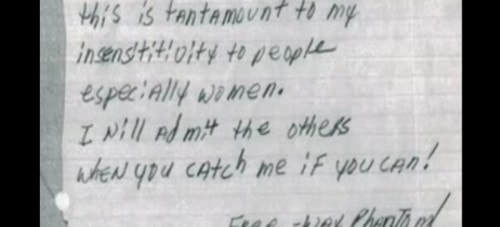 The killer’s last victim, 17-year-old Diane Williams, spent the evening cooking dinner for her family and visiting her boyfriend. She was last seen boarding a bus. Her strangled body was found along I-295 just south of the District Line. There was DNA evidence on her clothing. An investigator turned the clothing over to the Maryland State Police, who reported being too backlogged to test it. The investigator then took the clothing to the FBI, who also reported having a long backlog. So after months of not having any test results, he took the clothing back to the Maryland State police to be tested. It appears the clothing was ultimately lost.
The killer’s last victim, 17-year-old Diane Williams, spent the evening cooking dinner for her family and visiting her boyfriend. She was last seen boarding a bus. Her strangled body was found along I-295 just south of the District Line. There was DNA evidence on her clothing. An investigator turned the clothing over to the Maryland State Police, who reported being too backlogged to test it. The investigator then took the clothing to the FBI, who also reported having a long backlog. So after months of not having any test results, he took the clothing back to the Maryland State police to be tested. It appears the clothing was ultimately lost.The suspects
Robert Askins had murdered a prostitute by poisoning her, but had been released from incarceration as a result of a mistake in the court process. He lived in the area of the homicides. Robert had committed other abductions and rapes. In one situation, he made the young woman write a note. He had also used the world “tantamount.” A search of his home found women’s scarves, even though he lived alone. A search of his vehicle found earrings, but none could be associated with the victims in this case. Robert died in 2010 in a Federal prison in Cumberland, Maryland, where he was serving time for abduction and rape. Robert always denied being the Freeway Phantom.
A prison informant called the police and said he has information on the murders. He said they were associated with the Green Vega rapes that had occurred in Washington DC in the mid-70’s. A gang of men in a green Vega were raping women. It was an election year, and a political candidate announced that they have an informant in prison talking about the murders, and the informant stopped talking. The Green Vega vehicle didn’t come out until 1972 (after the murders).
Former Washington police officers, Edward Sullivan and Tommie Simmons, were convicted of murdering Angela Denise Barnes, age 14. Angela was shot in the back of the head in 1971. Even though Angela’s death was initially suspected to be part of the work of the Freeway Phantom, investigators believed this murder was unrelated. Angela’s mother, Annette Canady, still keeps Annette’s bedroom wall the same, where Angela took a red magic marker and drew hearts with arrows through them (against her mother’s wishes) and wrote “love Angela” beneath them. It was hard for her to watch her surviving younger daughter eventually do the things that Angela used to do, like giggle on the phone and play music and the TV at the same time, knowing she was gone. The fact that two police officers murdered this young girl escalated the frustration between the community and the police.
Investigation efforts
Evander Spinks Belk, Carol’s sister, kept returning to the police for information only to find the police had moved on to other cases. When African American Detective Romaine Jenkins was promoted, she decided she was going to do everything she could to solve these murders. Unfortunately, she discovered that all of the forensic evidence from the cases had been destroyed. The case files have been destroyed.
We can never let an investigation disrespect victims, families and a community in a similar manner again. Lives matter…
On the lighter side, I played in an over 50 baseball game yesterday. One of our players pulled a muscle during an inning and we had to replace him. When the team pointed out we needed to replace him, with the man he subbed in for, I told them the man he had re-entered for was now frying fish behind the bleachers (we feed both teams after games). Both teams agreed this was a problem. Our opponents turned to the bleachers and asked if anyone was good at frying fish… Ball—the way it’s meant to be enjoyed!
A friend looking for carpet laughed as he noted that people were buying my books at Tyke’s Carpet Castle in Brainerd. Thank you J.B.! I would like to thank the various businesses that continue to sell my books in significant numbers:
Red’s Auto in Pierz
The Shoppes of Little Falls
CatTales Books & Gifts in Brainerd
Tykes Carpet Castle in Brainerd
Beagle & Wolf Books and Bindery in Park Rapids
Barnes & Noble in St. Cloud
The Crossing Arts Alliance in Brainerd
Writing True Crime…
 This isn’t the ultimate cover for Burning Bridges, but it’s a working copy for now. This story is so crazy, I wrestle at times with including the facts of the case, as my concern is that people won’t find it believable. But I’ve decided to stick with true crime. Here are some examples of the true facts of the case: public displays of humiliation, threatening of bartenders in St. Cloud with guns, stalking, a burning bed, a crazy obnoxious history of criminal behavior, a body buried in a state forest, swearing and exposing at drive-thrus, a murder weapon tossed into the Platte River (in the town of Royalton), a recorded rape, and a presumed innocent killer.
This isn’t the ultimate cover for Burning Bridges, but it’s a working copy for now. This story is so crazy, I wrestle at times with including the facts of the case, as my concern is that people won’t find it believable. But I’ve decided to stick with true crime. Here are some examples of the true facts of the case: public displays of humiliation, threatening of bartenders in St. Cloud with guns, stalking, a burning bed, a crazy obnoxious history of criminal behavior, a body buried in a state forest, swearing and exposing at drive-thrus, a murder weapon tossed into the Platte River (in the town of Royalton), a recorded rape, and a presumed innocent killer.  Platte River from the bridge in Royalton. The murder weapon was tossed off this bridge into the river, but never found.
Platte River from the bridge in Royalton. The murder weapon was tossed off this bridge into the river, but never found. I need to get back to finish writing this story.
Thanks for listening,
Frank
Published on August 02, 2020 10:33
July 26, 2020
Mistaken Identity: The murders of Charlisa Clark and Pasquale Del Sordo + finishing up true crime novel, Burning Bridges.
The Art of the Lake event in Battle Lake was cancelled this year, but they graciously invited me to sell books at the farmers market last Saturday. Similar to all three arts events I sold books at last year, it rained until 9:00 a.m. and then was nice. I ended up selling a bunch of books. It was nice to be outside, talking to people, even if we kept our social distance and most wore masks.
It’s been a busy summer with moving the girls to Washington, constantly adjusting to the new rules at work, and writing book 5 in the Jon Frederick series, Burning Bridges. Kloe Kapsner will be on a railroad bridge on the cover and Elise Yates is standing behind the dam in Little Falls for the back cover shot. In one of our failed efforts, the smoke bomb Elise was holding started on fire in her hand. Fortunately, she released it immediately and she wasn’t hurt. Kloe Kapsner
Kloe Kapsner 








 Elise Yates Mistaken Identity: The murders of Charlisa Clark and Pasquale Del Sordo
Elise Yates Mistaken Identity: The murders of Charlisa Clark and Pasquale Del Sordo
April 18, 2000, a 3 year old boy, Eugene, is discovered bloody and wandering the street in Hamilton, Ontario, Canada. When an officer returns him home, he finds Pasquale Del Sordo and Charlisa Clark bludgeoned to death. There was no sign of forced entry and nothing was missing from the apartment. There was a great deal of anger displayed in this homicide, as the two were beat to death with a baseball bat. Pasquale was an award winning carpenter who loved to woodwork. Charlisa had a great reputation as being artistic and a kind volunteer. (I couldn’t find a picture of Charlisa, or I would have included it). Pasquale is pictured below: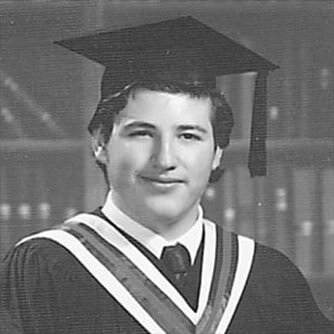 Pasquale Del Sordo A leucocrystal violet (LCV) light was used by crime scene techs to examine the scene. Leucocrystal violet turns anything that comes in contact with blood purple. There was a large amount of blood splatter above the bed. The saddest revelation was the bloody footprints which told the story of the 3 year old’s morning. They followed his footprints to each of his parents, as the boy tried to wake them. When he couldn’t, his footprints went into the kitchen where he poured himself a bowl of cereal and waited for his parents. Eventually, the boy wandered outside to find someone.
Pasquale Del Sordo A leucocrystal violet (LCV) light was used by crime scene techs to examine the scene. Leucocrystal violet turns anything that comes in contact with blood purple. There was a large amount of blood splatter above the bed. The saddest revelation was the bloody footprints which told the story of the 3 year old’s morning. They followed his footprints to each of his parents, as the boy tried to wake them. When he couldn’t, his footprints went into the kitchen where he poured himself a bowl of cereal and waited for his parents. Eventually, the boy wandered outside to find someone.
A palm print was found on the baseball bat. Unfortunately, palm prints aren’t in a database.
Initial Suspects:
The obvious suspect was Charlisa’s ex-boyfriend (Eugene’s father) who was reportedly abusive. He was denied visitation with his son. His mother was his alibi. He was given a polygraph examination. While it wasn’t clear if he committed the murder, he appeared to hiding something.
Pasquale’s father, Flavio Del Sordo, oddly managed to show up at the murder scene the next morning, even though he claimed he didn’t know where Charlisa lived. Flavio was angry over his son’s murder and refused to take a polygraph.
The palm print didn’t match either suspect. The case went cold, and the investigators were assigned new cases.
A tip came in, indicating that a man in chemical dependency treatment said that Carl Ernest Hall admitted to beating Charlisa and Pasquale to death, when purging his sins in chemical dependency treatment. Hall had come to the apartment because was upset over being ripped off during a past drug deal with a man named Paul. Hall entered the apartment by climbing the fire escape and pulling up a window. What Hall didn’t realize is that Paul no longer lived in the apartment. Charlisa had moved into the apartment after Paul left. The murders were a case of mistaken identity. Carl Hall Carl Hall was already in custody in connection with the rape and murder of Jacqueline McLean, 35, who was beaten to death with a steel bar in a Hamilton apartment on Aug. 20, 2001. Hall had been arrested on March 16, 2002. Carl Hall’s palm print matched the print on the baseball bat.
Carl Hall Carl Hall was already in custody in connection with the rape and murder of Jacqueline McLean, 35, who was beaten to death with a steel bar in a Hamilton apartment on Aug. 20, 2001. Hall had been arrested on March 16, 2002. Carl Hall’s palm print matched the print on the baseball bat.
In 2007, Carl Hall pled guilty to two counts of 2nd Degree Murder for the murders of Charlisa Clark, 24, and Pasquale Delsordo, 25. He was given concurrent life sentences, in addition to the life sentence he was serving for the murder of Jackie McLean.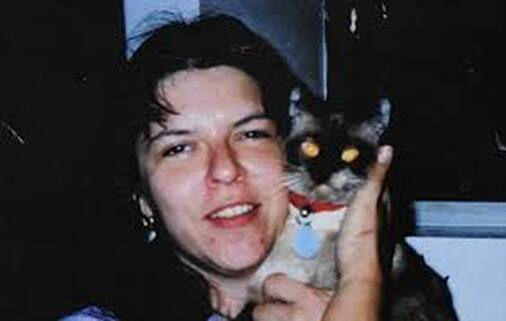 Jackie McLean Jackie McLean had planned to enter chemical dependency treatment the next day. It is suspected that he beat her to death and had sex with her after she died. Hall admits having sex with her, but stated, “What bothers me is that they’re saying I raped her. That’s retarded. It was consensual. I’m not a rapist … I mean, why would I beat some crack whore to death? And necrophilia, that’s ridiculous.” At the trial, evidence was presented that Hall had, soon after McLean’s death, visited his female partner and told her he needed to get out of town right away because he had done something bad. A waitress had witnessed Hall and McLean arguing close to Big Lisa’s Bar on the night of Jackie’s murder. However, Carl Hall was eventually acquitted of Jackie’s murder. Hall smirked at Jackie’s family after the ruling. Jackie’s sister angrily told him, “You got off on my sister and you got off in court.” Hall still admits killing Charlisa and Pasquale and is still serving life sentences for those murders.
Jackie McLean Jackie McLean had planned to enter chemical dependency treatment the next day. It is suspected that he beat her to death and had sex with her after she died. Hall admits having sex with her, but stated, “What bothers me is that they’re saying I raped her. That’s retarded. It was consensual. I’m not a rapist … I mean, why would I beat some crack whore to death? And necrophilia, that’s ridiculous.” At the trial, evidence was presented that Hall had, soon after McLean’s death, visited his female partner and told her he needed to get out of town right away because he had done something bad. A waitress had witnessed Hall and McLean arguing close to Big Lisa’s Bar on the night of Jackie’s murder. However, Carl Hall was eventually acquitted of Jackie’s murder. Hall smirked at Jackie’s family after the ruling. Jackie’s sister angrily told him, “You got off on my sister and you got off in court.” Hall still admits killing Charlisa and Pasquale and is still serving life sentences for those murders.
Eugene (the 3 year old boy, back in 2000), reports talking to his mother every night before he goes to sleep. He was raised by his maternal grandmother, and despite this tragedy, is doing well. Resilience. God bless him…
Thanks for listening,
Frank



















It’s been a busy summer with moving the girls to Washington, constantly adjusting to the new rules at work, and writing book 5 in the Jon Frederick series, Burning Bridges. Kloe Kapsner will be on a railroad bridge on the cover and Elise Yates is standing behind the dam in Little Falls for the back cover shot. In one of our failed efforts, the smoke bomb Elise was holding started on fire in her hand. Fortunately, she released it immediately and she wasn’t hurt.
 Kloe Kapsner
Kloe Kapsner 








 Elise Yates Mistaken Identity: The murders of Charlisa Clark and Pasquale Del Sordo
Elise Yates Mistaken Identity: The murders of Charlisa Clark and Pasquale Del SordoApril 18, 2000, a 3 year old boy, Eugene, is discovered bloody and wandering the street in Hamilton, Ontario, Canada. When an officer returns him home, he finds Pasquale Del Sordo and Charlisa Clark bludgeoned to death. There was no sign of forced entry and nothing was missing from the apartment. There was a great deal of anger displayed in this homicide, as the two were beat to death with a baseball bat. Pasquale was an award winning carpenter who loved to woodwork. Charlisa had a great reputation as being artistic and a kind volunteer. (I couldn’t find a picture of Charlisa, or I would have included it). Pasquale is pictured below:
 Pasquale Del Sordo A leucocrystal violet (LCV) light was used by crime scene techs to examine the scene. Leucocrystal violet turns anything that comes in contact with blood purple. There was a large amount of blood splatter above the bed. The saddest revelation was the bloody footprints which told the story of the 3 year old’s morning. They followed his footprints to each of his parents, as the boy tried to wake them. When he couldn’t, his footprints went into the kitchen where he poured himself a bowl of cereal and waited for his parents. Eventually, the boy wandered outside to find someone.
Pasquale Del Sordo A leucocrystal violet (LCV) light was used by crime scene techs to examine the scene. Leucocrystal violet turns anything that comes in contact with blood purple. There was a large amount of blood splatter above the bed. The saddest revelation was the bloody footprints which told the story of the 3 year old’s morning. They followed his footprints to each of his parents, as the boy tried to wake them. When he couldn’t, his footprints went into the kitchen where he poured himself a bowl of cereal and waited for his parents. Eventually, the boy wandered outside to find someone.A palm print was found on the baseball bat. Unfortunately, palm prints aren’t in a database.
Initial Suspects:
The obvious suspect was Charlisa’s ex-boyfriend (Eugene’s father) who was reportedly abusive. He was denied visitation with his son. His mother was his alibi. He was given a polygraph examination. While it wasn’t clear if he committed the murder, he appeared to hiding something.
Pasquale’s father, Flavio Del Sordo, oddly managed to show up at the murder scene the next morning, even though he claimed he didn’t know where Charlisa lived. Flavio was angry over his son’s murder and refused to take a polygraph.
The palm print didn’t match either suspect. The case went cold, and the investigators were assigned new cases.
A tip came in, indicating that a man in chemical dependency treatment said that Carl Ernest Hall admitted to beating Charlisa and Pasquale to death, when purging his sins in chemical dependency treatment. Hall had come to the apartment because was upset over being ripped off during a past drug deal with a man named Paul. Hall entered the apartment by climbing the fire escape and pulling up a window. What Hall didn’t realize is that Paul no longer lived in the apartment. Charlisa had moved into the apartment after Paul left. The murders were a case of mistaken identity.
 Carl Hall Carl Hall was already in custody in connection with the rape and murder of Jacqueline McLean, 35, who was beaten to death with a steel bar in a Hamilton apartment on Aug. 20, 2001. Hall had been arrested on March 16, 2002. Carl Hall’s palm print matched the print on the baseball bat.
Carl Hall Carl Hall was already in custody in connection with the rape and murder of Jacqueline McLean, 35, who was beaten to death with a steel bar in a Hamilton apartment on Aug. 20, 2001. Hall had been arrested on March 16, 2002. Carl Hall’s palm print matched the print on the baseball bat.In 2007, Carl Hall pled guilty to two counts of 2nd Degree Murder for the murders of Charlisa Clark, 24, and Pasquale Delsordo, 25. He was given concurrent life sentences, in addition to the life sentence he was serving for the murder of Jackie McLean.
 Jackie McLean Jackie McLean had planned to enter chemical dependency treatment the next day. It is suspected that he beat her to death and had sex with her after she died. Hall admits having sex with her, but stated, “What bothers me is that they’re saying I raped her. That’s retarded. It was consensual. I’m not a rapist … I mean, why would I beat some crack whore to death? And necrophilia, that’s ridiculous.” At the trial, evidence was presented that Hall had, soon after McLean’s death, visited his female partner and told her he needed to get out of town right away because he had done something bad. A waitress had witnessed Hall and McLean arguing close to Big Lisa’s Bar on the night of Jackie’s murder. However, Carl Hall was eventually acquitted of Jackie’s murder. Hall smirked at Jackie’s family after the ruling. Jackie’s sister angrily told him, “You got off on my sister and you got off in court.” Hall still admits killing Charlisa and Pasquale and is still serving life sentences for those murders.
Jackie McLean Jackie McLean had planned to enter chemical dependency treatment the next day. It is suspected that he beat her to death and had sex with her after she died. Hall admits having sex with her, but stated, “What bothers me is that they’re saying I raped her. That’s retarded. It was consensual. I’m not a rapist … I mean, why would I beat some crack whore to death? And necrophilia, that’s ridiculous.” At the trial, evidence was presented that Hall had, soon after McLean’s death, visited his female partner and told her he needed to get out of town right away because he had done something bad. A waitress had witnessed Hall and McLean arguing close to Big Lisa’s Bar on the night of Jackie’s murder. However, Carl Hall was eventually acquitted of Jackie’s murder. Hall smirked at Jackie’s family after the ruling. Jackie’s sister angrily told him, “You got off on my sister and you got off in court.” Hall still admits killing Charlisa and Pasquale and is still serving life sentences for those murders.Eugene (the 3 year old boy, back in 2000), reports talking to his mother every night before he goes to sleep. He was raised by his maternal grandmother, and despite this tragedy, is doing well. Resilience. God bless him…
Thanks for listening,
Frank




















Published on July 26, 2020 11:38
July 14, 2020
America the Beautiful!
 Perhaps it’s wise to title the 5th book in the Jon Frederick series Burning Bridges. I’ve elected to leave my publisher and buy back the rights to all of my books. It’s an expensive process, but I’m gambling it will pay off in the long run. North Star Press was a blessing to me. Curt Weinrich and Liz Dwyer are intelligent and gifted. North Star gave me an opportunity when an author needed to be picked up by national publisher in order to have their book available at all venues. This is no longer the case. They wanted me to stay, but at the moment I feel I made the right choice. As we do in life, we roll the dice and see. Covid-19 led to cancellation of over 20 major events for me, and I’ve decided to try my own hand at marketing. I’m open to help and any great ideas….
Perhaps it’s wise to title the 5th book in the Jon Frederick series Burning Bridges. I’ve elected to leave my publisher and buy back the rights to all of my books. It’s an expensive process, but I’m gambling it will pay off in the long run. North Star Press was a blessing to me. Curt Weinrich and Liz Dwyer are intelligent and gifted. North Star gave me an opportunity when an author needed to be picked up by national publisher in order to have their book available at all venues. This is no longer the case. They wanted me to stay, but at the moment I feel I made the right choice. As we do in life, we roll the dice and see. Covid-19 led to cancellation of over 20 major events for me, and I’ve decided to try my own hand at marketing. I’m open to help and any great ideas….  My son-in-law was on the Naval aircraft carrier the USS Theodore Roosevelt, but was fortunate not to have Covid. He did have my trilogy with him, and as the 5000 soldiers were quarantined, I developed a new and excited following for my books. It was nice to hear so many people loved the books and are excited about the release of Lying Close.
My son-in-law was on the Naval aircraft carrier the USS Theodore Roosevelt, but was fortunate not to have Covid. He did have my trilogy with him, and as the 5000 soldiers were quarantined, I developed a new and excited following for my books. It was nice to hear so many people loved the books and are excited about the release of Lying Close. 
 This picture was taken at the edge of a 100 foot cliff.
This picture was taken at the edge of a 100 foot cliff.  My daughter Nicolette and I have driven together from the Pacific Ocean, to the Atlantic Ocean, and now back to the Pacific Ocean over the past few years as she meets her husband after deployment. Before we left Minnesota, I had to drop some Mentos in a bottle of Diet Coke to entertain my granddaughter.
My daughter Nicolette and I have driven together from the Pacific Ocean, to the Atlantic Ocean, and now back to the Pacific Ocean over the past few years as she meets her husband after deployment. Before we left Minnesota, I had to drop some Mentos in a bottle of Diet Coke to entertain my granddaughter.The United States of America is beautiful and there are so many kind people. It obviously isn’t the best time to travel, especially from Minnesota (where the Covid rates are going down) to Washington (where the rates are rapidly rising). I’ve recently been to the funerals of two great men, Roger Weber and Ron Gross. Ron was a strong and gentle man, and a great hunter. Roger was a caring man who committed his life to education. He had that same hearty laugh all of my dad’s brothers had. When you heard it, you knew that guy’s having a great time. My uncles, like me and my brothers, always had a great time when they were together. A gift we all hope to pass on to our children.

 We spent a night in Bismarck, North Dakota. Each night we looked for good food, and at the end of the day, I looked for a glass of a local tap beer to try to cap off the night. We stopped at Stonehome Brewery. With my large fried shrimp (I know an oxymoron) and sweet potato fries, I enjoyed a glass of Cinco Celebration, which is a Mexican Light Lager brewed in Bismarck. (Crisp and clean).
We spent a night in Bismarck, North Dakota. Each night we looked for good food, and at the end of the day, I looked for a glass of a local tap beer to try to cap off the night. We stopped at Stonehome Brewery. With my large fried shrimp (I know an oxymoron) and sweet potato fries, I enjoyed a glass of Cinco Celebration, which is a Mexican Light Lager brewed in Bismarck. (Crisp and clean). 
 We then went into Montana, by an entry to Yellowstone, and ultimately spent the night in Bozeman. We walked along the Missouri River and stopped at Montana Ale Works where we enjoyed shrimp spring rolls, potstickers and salads with local grown vegetables. The spring rolls in particular were amazing—fried perfectly with whole shrimp and peapods inside rather than all ground up. I tried the Ale Works 20th Anniversary Lager, brewed by Bozeman Brewing. It was good with a little bit of summer lemon aftertaste.
We then went into Montana, by an entry to Yellowstone, and ultimately spent the night in Bozeman. We walked along the Missouri River and stopped at Montana Ale Works where we enjoyed shrimp spring rolls, potstickers and salads with local grown vegetables. The spring rolls in particular were amazing—fried perfectly with whole shrimp and peapods inside rather than all ground up. I tried the Ale Works 20th Anniversary Lager, brewed by Bozeman Brewing. It was good with a little bit of summer lemon aftertaste. 

 The most beautiful part of the drive was through the Rocky Mountains in Montana, Idaho and Washington. For anyone who has made that drive, you know you don’t stop and take pictures because it’s too dangerous. Like most of life, you enjoy it without pictures. I took the picture below by our hotel in Montana.
The most beautiful part of the drive was through the Rocky Mountains in Montana, Idaho and Washington. For anyone who has made that drive, you know you don’t stop and take pictures because it’s too dangerous. Like most of life, you enjoy it without pictures. I took the picture below by our hotel in Montana.  We were headed for Spokane, Washington, but after national news announced Spokane is the epicenter for Covid-19 growth at the present time, we drove on to Ellensburg, which didn’t offer near the same risk (according to media reports). Ellensburg primarily advertises its’ rodeos. We found a small local Italian restaurant, called Ellensburg Pasta. They have a wonderful house spaghetti which we could enjoy in their outdoor seating. I enjoyed it with a cold glass of Dru Bru Kolsch, brewed in Snoqualmie Pass in Washington. We walked the main drag and then found Winegar’s homemade ice cream. Heavenly!
We were headed for Spokane, Washington, but after national news announced Spokane is the epicenter for Covid-19 growth at the present time, we drove on to Ellensburg, which didn’t offer near the same risk (according to media reports). Ellensburg primarily advertises its’ rodeos. We found a small local Italian restaurant, called Ellensburg Pasta. They have a wonderful house spaghetti which we could enjoy in their outdoor seating. I enjoyed it with a cold glass of Dru Bru Kolsch, brewed in Snoqualmie Pass in Washington. We walked the main drag and then found Winegar’s homemade ice cream. Heavenly! 
 The 2 pictures below were taken in the Gingko petrified forest along the Columbia river in Washington.
The 2 pictures below were taken in the Gingko petrified forest along the Columbia river in Washington. 
 We drove through Seattle, as I love to visit cities, even though I love living in rural Minnesota. I enjoy seeing the amazing structures pieced together, especially when I don’t have to be at a destination at a certain time. We explored some underground bunkers in Washington.
We drove through Seattle, as I love to visit cities, even though I love living in rural Minnesota. I enjoy seeing the amazing structures pieced together, especially when I don’t have to be at a destination at a certain time. We explored some underground bunkers in Washington. 


 When we arrived at Whidbey Island, just north of Seattle, I received a text from the Canadian government stating, “Welcome to Canada.” Branden flew in late off of the aircraft carrier into the Naval Air Station. I got to see Nicolette greet him, after not seeing him for 6 months. (Those pictures are for her to share). I received a call from work at 7:30 a.m. the next morning from a kind colleague who wanted to update me that things were still going well at CORE. I’m sure she didn’t realize that it’s 2 hours earlier in Washington.
When we arrived at Whidbey Island, just north of Seattle, I received a text from the Canadian government stating, “Welcome to Canada.” Branden flew in late off of the aircraft carrier into the Naval Air Station. I got to see Nicolette greet him, after not seeing him for 6 months. (Those pictures are for her to share). I received a call from work at 7:30 a.m. the next morning from a kind colleague who wanted to update me that things were still going well at CORE. I’m sure she didn’t realize that it’s 2 hours earlier in Washington. I’m finishing the cover shot for Burning Bridges next week and I hope to have pictures to share soon. On Tuesday, July 14, I’m speaking to the Brainerd Rotary Club virtually over Zoom.


 Despite the pandemic, people across the country found something to enjoy every day, and prepared for the future, whether it was through construction or taking care of children. I’m thankful to enjoy this time with you, however we communicate…
Despite the pandemic, people across the country found something to enjoy every day, and prepared for the future, whether it was through construction or taking care of children. I’m thankful to enjoy this time with you, however we communicate…Thanks for listening,
Frank





 Someone sent me this, so I thought I’d share it. I’m not selling anything. I just thought it was interesting.
Someone sent me this, so I thought I’d share it. I’m not selling anything. I just thought it was interesting. 
Published on July 14, 2020 05:14
July 1, 2020
Visa Restrictions and the need for Information Technology (IT) workers
 I want a strong America, for everybody.
I want a strong America, for everybody.I apologize for the following rant, but I’m a numbers guy. It’s important for people to understand our current need for skilled people in the technology arena at the present time. We can’t let politics stand in the way of progress. As people who’ve read my blog know, I’m not a democrat or a republican. I’m one of many people who want to improve the lives of all Americans.
Visa restrictions are understandable, but it can’t be a blanket policy.
The United States is limiting visas in order to maintain jobs for our citizens in the midst of the covid-19 pandemic. This seems logical on the surface. But we need to be careful of the impact blanket policies have on our future. At the present time, there is a need for college graduates in the technology industry. Today, there are over 120,000 job openings in the tech sector in the U.S., which is as many as when the whole pandemic started. We simply don’t have the people to fill these positions. Students come from all over the world to attend college in the U.S., and stay here to work in our tech companies. By eliminating visa programs, they will return to their home countries, mostly China, and start their own companies. China and India produce hundreds of thousands of tech graduates every year. Apple, Google, Microsoft, Amazon and Tesla have all complained about blanket visa restrictions and have reported they may have to move more of their technology business out of the U.S. to fill the demands for their work. For example, Canada allows these visas. A financial analyst pointed out this week that the restrictions on visas hurt the U.S. and benefit all of competitors:
“This may be a Canadian jobs creation act. You can go to Toronto and hire people to work there quite effectively.” Chuck Robbins, The Financial Times on July 23, 2020.
 STEM occupations refer to Science, Technology, Engineering and Mathematics. The need for skilled workers in these jobs in the U.S is growing at a more rapid pace than our population growth. To put it in perspective, Information Technology (basically anything to do with computer technology) employed 110,800 managers in 2010. That number has now tripled.
STEM occupations refer to Science, Technology, Engineering and Mathematics. The need for skilled workers in these jobs in the U.S is growing at a more rapid pace than our population growth. To put it in perspective, Information Technology (basically anything to do with computer technology) employed 110,800 managers in 2010. That number has now tripled.The new restrictions of the H-1B visa category restrict the visa for highly skilled workers such as software engineers and programmers. Last year, we issued 188,000 of these visas in the U.S., and the U.S. tech companies say those workers are crucial to their competitiveness with companies from other countries throughout the world.
Visa exemptions will be made for H-2B food service industry workers, such as cannery workers and agricultural labor. I’m not saying we shouldn’t do this—but think about the implications. We are exporting high tech jobs in exchange for basic labor jobs. One classic exemption in the visa policy is exemptions for an “au pair” (typically a young immigrant woman who provides childcare) if your au pair works in the best interest of national security. In other words, you can have an immigrant childcare worker if you’re a politician, but not if you’re an average American. It it’s right or wrong, shouldn’t it apply to everyone?
Steve Jobs, founder of Apple, spoke of the need for people in the technology industry before his death, reporting he needed to take Apple out of the U.S. because they simply couldn’t fill positions. Visas provide a way of keeping jobs in the U.S., and recruit people who can contribute significantly to our economy, tax base, etc.
We have unemployment in the U.S. The problem is that the vast majority of these people can’t step into technology jobs, and either aren’t able, or aren’t willing, to be trained to do so. Don’t get me wrong—we have great tech people in the U.S. We simply aren’t keeping up with the increased demand, and we are at risk of losing more American jobs if we don’t fill them with educated immigrants. A permanent solution would involve revamping our educational systems to better address the need for technological expertise in the future. It’s not like it’s difficult to get a child to sit at a computer. We need to be more assertive in educating our youth, rather than simply using technology for entertainment.
 With that said, can America handle crisis? Yes. We’re in crisis—right now—and we’re handling it. We are in the middle of the worst pandemic America has seen in a century, and everyone is a little more on edge. We have hate crimes and racial riots that have destroyed families and communities. But we’re getting back on our feet, and we find something to enjoy every day. Every person at my past week’s events respected the space and dignity of others. I swim with my grandchildren (in an above ground pool) every day, and we find the moon before bedtime.
With that said, can America handle crisis? Yes. We’re in crisis—right now—and we’re handling it. We are in the middle of the worst pandemic America has seen in a century, and everyone is a little more on edge. We have hate crimes and racial riots that have destroyed families and communities. But we’re getting back on our feet, and we find something to enjoy every day. Every person at my past week’s events respected the space and dignity of others. I swim with my grandchildren (in an above ground pool) every day, and we find the moon before bedtime.  My work goes on. My writing goes on. I’m anxious to see the bridge cover shots of Kloe Kapsner, when Trisha Spencer has them done. I’ll share them online for feedback on the cover.
My work goes on. My writing goes on. I’m anxious to see the bridge cover shots of Kloe Kapsner, when Trisha Spencer has them done. I’ll share them online for feedback on the cover. Thanks for listening,
Frank
Published on July 01, 2020 05:00



